Animals adapting: 15 Unique Examples of Animal Adaptations
Posted on15 Unique Examples of Animal Adaptations
Have you ever wondered why some animals are brightly colored while others blend into their surroundings? Why do frogs hibernate, and why do blowfish puff up? These are all adaptations that animals have made based on their environment and needs. Learn examples of animal adaptations in various habitats, and what purpose each adaptation serves.
adaptable meerkats standing in row
Advertisement
Adaptations for Self-Defense
For animals closer to the bottom of the food chain, physical adaptations are important for self-protection. Whether these adaptations help them hide, scare predators away or even taste bad depends on each animal’s traits and environment. Take a quick trip around the world to see some amazing animals’ abilities to keep from becoming prey.
African Spiny Mice Heal Quickly
With their tiny bodies and thin skin, African spiny mice seem like the perfect prey for desert animals. But the thinness of their skin is actually an effective adaptation that allows these mice to heal almost immediately. While other mice may die from injuries after a bout with a fox or owl, African spiny mice heal much more quickly than any other mammal. They are able to regenerate skin tissue itself, as well as hair follicles and fur, rather than replace it with scar tissue.
Amphibians Regrow Limbs
You may have heard of a lizard regrowing its tail after losing the original tail to a hawk or cat. But did you know that some amphibians can regenerate other limbs, including jaws or even retinas? Newts and salamanders are the most talented amphibians when it comes to regeneration, and are able to escape certain death by abandoning their old body parts.
Meerkats’ Coloring Helps Them See
Meerkats live in the savanna biome, where there are predators everywhere. They live in colonies with one meerkat acting as a lookout for the rest of the group. Scanning long distances through the savanna sun is no problem for these little animals, since they have dark fur around their eyes that reduces glare (much like eye paint for football players).
Pufferfish Expand in Size
Pufferfish, also known as blowfish, are easy targets for predators. They are slow and easy to spot in the ocean. However, if a predator gets too close, the pufferfish can ingest water and air very quickly, making them several times larger than their normal size. And if the newly huge pufferfish doesn’t scare a predator away, the pufferfish’s poison will do the job. It releases tetrodotoxin, which makes them taste bad and can kill a larger fish.
Advertisement
Red-Spotted Purple Butterflies Mimic Pipevine Swallowtails
From a glance, it’s difficult to tell the iridescent red-spotted purple butterflies apart from pipeline swallowtails. The main difference is in their toxicity: pipevine swallowtails are poisonous, while red-spotted purple butterflies are not. Their mimicry of the more toxic butterflies keeps red-spotted purples safe from birds who might quickly mistake them from their foul-tasting counterparts.
Adaptations to Catch Prey
Not every animal needs to adapt to steer clear of predators. Some animals, especially apex predators, adapt in order to hide from their prey before striking. Others have developed the ability to survive eating toxic animals to stay alive. See how these animals have adapted in unique ways to make sure they can hunt effectively.
Kingsnakes Are Immune to Venom
Kingsnakes are known as “kings” because they eat other snakes. Sometimes, these snakes include highly venomous snakes like rattlesnakes or cottonmouths. One bite from these smaller snakes would kill another predator. However, kingsnakes, which are non-venomous, have developed an immunity or tolerance to snake venom. This enables kingsnakes to eat prey that other predators can’t, which is beneficial in sparsely populated habitats.
Advertisement
Octopuses Blend In
Octopuses are extremely intelligent and skilled at escaping predators. When they can’t outsmart a bigger animal, they quickly change their color to blend into their surroundings.
Tigers Disappear in the Shadows
Tigers are famous for their beautiful stripes. But those stripes aren’t just decoration: they help tigers lurk in shadowy jungles. Their stripes camouflage them in the shadows cast by tall trees and branches, making them almost invisible to unsuspecting prey.
Adaptations to Survive Harsh Conditions
Have you ever wondered how animals can live in extreme heat or cold habitats? Or how animals have adapted to human intervention in their environment? These incredible animals have both physically and behaviorally adapted to best survive in their surroundings.
Camels Block Sand, Heat and Starvation
It’s easy to think that camels are “made for the sand,” but in reality, they’ve successfully adapted to their harsh desert environment over millions of years. Camels have long eyelashes (and a third eyelid) to keep sand out of their eyes and wide feet to distribute their weight evenly on the sand.
Advertisement
Dorcas Gazelles Don’t Urinate
Another desert-adapted animal is the dorcas gazelle, which can live for a very long time without water in Northern Africa. They extract water from the desert plants they eat, and conserve their energy during the day. Dorcas gazelles even extract water before urinating so their urine comes out as solid pellets of uric acid.
Irrawaddy Dolphins Help Fishermen
Dolphins are an example of animals who have adapted to human presence in their environment. Irrawaddy (and in some cases, bottlenose) dolphins have been known to work with fishermen in a process known as “cooperative fishing.” The dolphins chase fish to the boats and signal where the fishermen should throw their nets.
Advertisement
Wood Frogs Freeze Their Blood
You may know that bears hibernate during the winter, as do snakes, groundhogs and bats. But did you know that wood frogs can actually freeze their blood during cold seasons? Wood frogs are the only frogs found north of the Arctic circle, and thanks to an antifreeze-like chemical in their blood, they can stop their hearts and form ice crystals inside their body. They then awaken from this hibernation state when spring arrives.
Adaptations to Pass on Genes
Every animal’s highest priority is to stay alive long enough to reproduce and pass on their genes. That’s why animals adapt through the process of evolution. Adaptations allow animals to camouflage themselves, attract mates, catch prey more easily, and stay alive in extreme temperatures.
Birds of Paradise Perform Mating Dances
Competition for mates with desirable traits is fierce among the birds of paradise. Primarily located in New Guinea and eastern Australia, these colorful, strangely decorated male birds learn to perform mating dances at a young age. Female birds, who are more plainly colored to blend in with their surroundings, must decide which male has the best traits for her offspring. The best dancer wins the ability to pass on their genes.
Advertisement
Great White Shark Pups Are Huge
Some species of sharks lay eggs, while others give live birth to two or more pups at a time. Great white sharks, one of the largest predatory sharks in the world, gestate for over a year before giving birth to three-foot-long pups.
Black Widows Avoid Cannibalism
Spiders lay hundreds of eggs at a time, with some of their spiderlings hatching earlier than others. In those cases, the baby spiders grow at different rates, resulting in spider cannibalism from the older babies toward the younger ones. Fewer spiders are able to reproduce if they are eaten as babies. Black widow eggs are unique in that they hatch and develop at almost the same time, making it less likely for them to cannibalize any younger siblings.
Adaptations Help the Food Chain
Animals adapt both physically and behaviorally, depending on their environments. Animal adaptations help animals stay alive either by protecting them from predators or making it easier to catch prey. These animals have adapted to their environments, including climate, terrain, and available plantlife.
Staff Writer
Explore Animal Adaptations | Smithsonian National Museum of Natural History
Explore Animal Adaptations | Smithsonian Video for Kids
All living things have adaptations to survive. From a tiny hummingbird hovering in your neighborhood to a giant whale swimming in the ocean, animals have adapted to live in many different environments. Now, what exactly does that mean and what is an adaptation? In this video, we’re going to cover what an adaptation is and look at how a few different animals use their adaptations to help them survive.
An adaptation is defined as a physical or behavioral feature of an animal that helps them better survive in their environment. In other words, an adaptation is something on their body or something they do with their bodies that help them find food, water, mates, and shelter.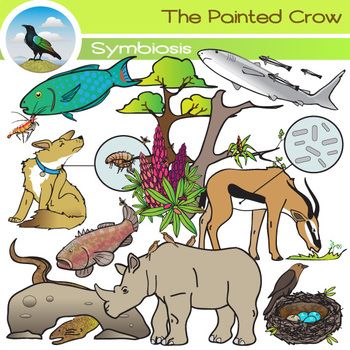
Now that we have an idea of what an adaptation is we’re going to look at three different animals and examine a few of their physical adaptations. We’ll focus on what is on their bodies to think about how they’ve been adapted to move, find food, water, shelter, and mates to better survive in their environment.
Let’s get started with the humpback whale. We’re going to look at its physical adaptations, or features, that are on its body. We’ll go over three different adaptations one by one and then go over how these adaptations help the whale live in its habitat.
First what do you see that might help this animal eat?
You may have noticed its large mouth.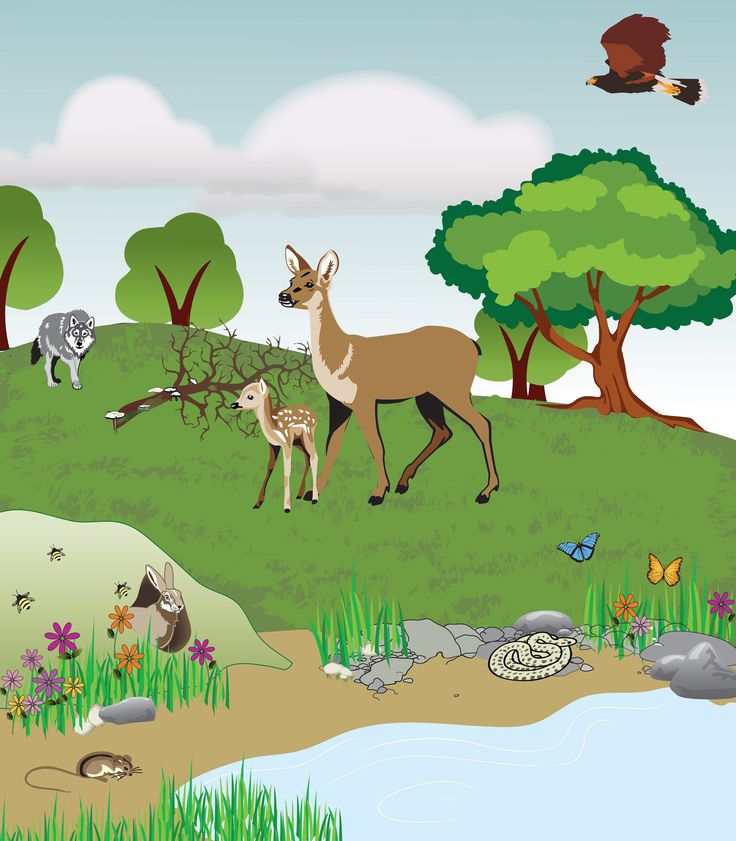
Next, what do you see that might help this animal breathe? It may be hard to see.
That’s right, the whale’s blow hole. For the whale’s blowhole, this is an adaptation that all whales and dolphins share that help them breathe. The blowhole is on top of the animal’s head and is connected to their lungs. When whales eat the water that goes into their mouth can’t go into their lungs, so there’s less risk of drowning. Whales are also able to actively control when they need to breathe by opening or plugging their blowhole.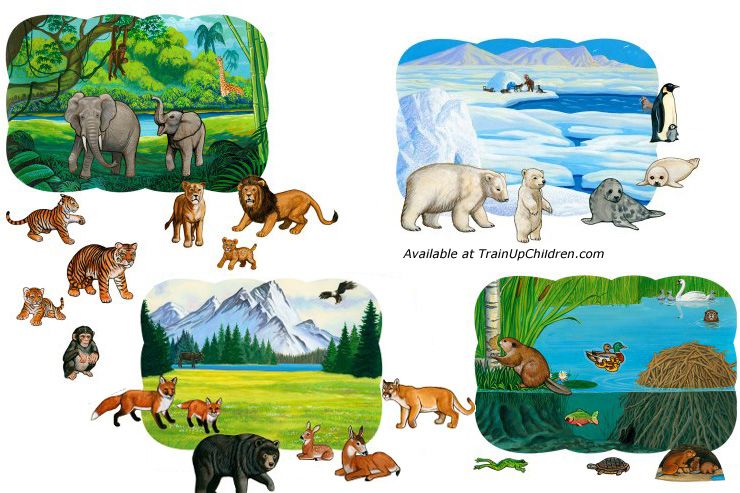
Now what do you see on the animal that helps it move?
Yes, the flippers and tail. The whale flippers and tail are adaptations that help the whale move through water. Its long flippers help steer while its tail, called a fluke, moves up and down to move it through the water. Its flippers are similar to your arms, only whale’s arms have changed over millions of years into flippers that help them swim better.
Alright, based on these adaptations where do you think the whale is adapted to live? From what we see now, how the whale moves, eats, and breathes in the water, the humpback whale lives in the ocean, the biggest water habitat on earth. The humpback whale lives in the ocean where it is adapted to swim through the water, feed on tiny animals, and come back up to the surface to breathe.
Next, we’re going to look at another animal, the clouded leopard. We’re also going to observe three physical adaptations that help it survive in its environment.
First, what do you see that might help the clouded leopard move?
Let’s start with the legs. Looking at the legs of the clouded leopard, did you notice how short their legs are? Having short legs help the leopard stay close to the surface it is on, which increases their balance.
Now let’s look at the paws of the clouded leopard. What big paws you have! Big paws help the clouded leopard have a better grip on things when they move through their habitat. That means it keeps them from slipping. Clouded leopard legs and paws are very special for another reason. They help the cat climb down surfaces head first like a squirrel. The clouded leopard is one of two cat species that can do this.
Do you see another adaptation that might help a clouded leopard move? Did anyone say tail? Clouded leopards also have a super long tail. A long tail is an adaptation that helps the animal keep its balance as they climb, jump, walk, and run through their environment. It acts like a counterbalance — the way holding your arms out helps you balance while walking on a balance beam.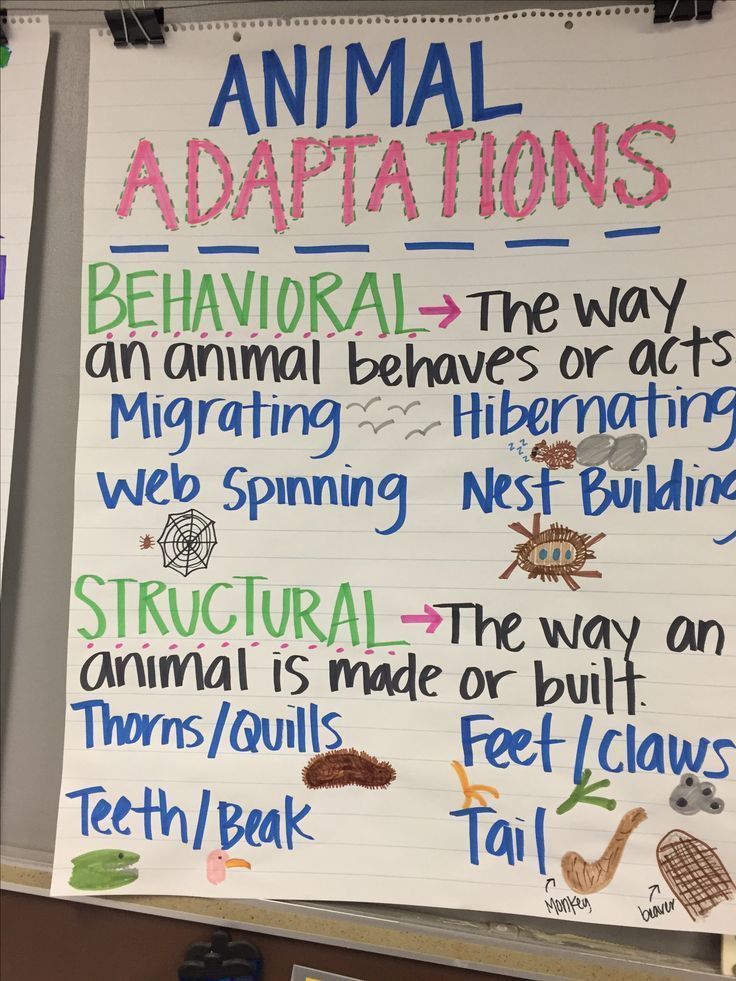
With the adaptations we just observed, where do you think the clouded leopard is adapted to live in?
With short legs and big paws for gripping and climbing down trees, a long strong tail to keep its balance, the answer is a forest habitat. It has adaptations that help it move and survive in an environment full of trees.
On to our final animal, the barred owl. Again, we’re gonna look at three different physical adaptations of the owl.
First, what do you see that would help him move?
Great job! Let’s first talk about the wings. The wings of the barred owl, like many birds, is an adaptation that allows it to fly. Flying allows the barred owl to move quickly through the air around its habitat. The barred owl also has specialized feathers on the outer parts of its wings that help it make almost no sound when it flies to catch prey.
Now what do you see on the owl that helps it navigate through its habitat?
Yes, the owl’s eyes. The barred owl, like other owls, has huge eyes compared to the size of its body.
Now what do you notice on the owl that can help it hide in its habitat?
That’s right, the owl’s feather pattern. The owl’s feather pattern is made up of brown and white spots and bars. The bars on its chest is how the barred owl got its name. These markings actually help the owl blend into its environment. You can hardly see it here. This blending in is called camouflage and helps the owl hide from predators and its prey.
Great observations! Where do you think the owl is adapted to live in?
We saw that the owl has wings that allow it to fly around its habitat, its eyes are adapted to help it see better at night, and the brown and white patterns on its feathers help it camouflage with the background. From this information, barred owls live in a forest habitat full of trees. As well the barred owl has adaptations suited to fly in the air and adaptations to hunt prey at night.
Great job everyone! We just learned how adaptations can be physical or behavioral features that animals have on their body or do with their body to help them survive. While we just focused on a few physical adaptations today, there can be many physical and behavioral adaptations that animals have to help them find food, water, shelter, and mates in their habitat.
You’re practicing skills that scientists use to study animals and how they use their adaptations to live and survive in different environments. You, too, can be like a scientist and make careful observations of animals around you.
Animal Adaptation: Facts (Science Trek: Idaho Public Television)
- Home
- Facts
- Links
- Games
- Teachers
- Books
- Glossary
- Videos
Polar bears in the Arctic. Zebras on the African plains. Sea turtles in the ocean. Lizards in the desert. There are so many different kinds of animals all over the world! How are animals able to live in so many different kinds of places? The answer is adaptations.
An adaptation is a characteristic that helps an animal survive in its habitat. All animals must be able to obtain food and water, protect themselves from harm, withstand the climate, and reproduce young so the species doesn’t become extinct. So, any animal who successfully survives on land or in water has physical or behavioral adaptations that help it to accomplish those goals. An adaptation can be a body part, body covering, body function, or behavior that increases an animal’s chances of survival in a particular place.
Animals develop these adaptations over time to match the environment where they live. The process of natural selection means that animals with traits that help them survive are more likely to live and pass on those traits to their offspring.
Animals live everywhere on Earth. Some places on Earth are very hot and some are very cold. Some places have a lot of water and plants, and some have very little. Animals can live in many different places in the world because they have special adaptations for the area in which they live. For example, a monkey with agile limbs and a long tail for climbing is well adapted to the jungle, but would have a hard time in the cold, treeless polar regions. A shaggy, wooly musk ox is comfortable in the Arctic, but would not do well in a tropical climate.
Adaptations are what allows such a diversity of animal species to live on Earth’s land, seas and skies. Through adaptations, animals have found ways to inhabit every environment on earth! Let’s take a look at some of the amazing adaptations animals have developed.
Physical Adaptations
Physical adaptations include body parts, body coverings, and physiological characteristics that help animals survive, find food, and stay safe.
Adaptation Facts for Kids: Kiddle Encyclopedia
Body Parts
The shape of a beak, the type of feet, the placement of eyes, the presence of whiskers, the shape of the nose or ears, and the sharpness of teeth are all examples of structural adaptations which help different animals to survive. As shown in the picture on the right, different kinds of birds have adapted different kinds of beaks that help them obtain their particular source of food. Beaks come in all shapes and sizes. For example, a hawk has a sharp, curved beak to tear its food into small pieces. A hummingbird has a long, thin beak to reach into flowers and get nectar. A parrot has a strong, thick beak to help it crack fruits and nuts. A pelican has a long beak with a pouch to help it scoop fish out of water.
All kinds of body parts may be adaptations. Horses and zebras have flat teeth for grinding their food (grass), while lions have sharp teeth for tearing their food (meat.) To escape predators, zebras also have excellent hearing and eyesight and powerful legs for running and kicking. Birds have hollow bones that help them fly. Ducks have oil glands that keep their feathers from becoming water-soaked, and webbed feet that help them to swim. A woodpecker not only has a strong, sharp beak for drilling holes, but it also has a very long barbed tongue to catch insects, two toes that point backward to help with climbing trees, and a stiff tail for support on the tree. Alligators have eyes and nostrils placed on top of their heads, allowing them to keep most of their body underwater so their prey cannot see them. For river otters, whiskers are an adaptation that help them feel their way through tight spots both on land and in water. Badgers have sharp claws for digging burrows and tunnels and for obtaining food. Because they live underground, excellent vision is not an adaptation that they need; badgers and moles often have poor eyesight. Learn more about physical adaptations.
Animals in the desert have special adaptations that help them conserve water and survive a habitat with extreme temperatures and lack of shelter. Camels have humps where they can store fat, allowing them to go without food and water for periods of time. Camels also have two rows of long, thick eyelashes to protect their eyes from blowing sand, and their nostrils can be closed as well. Their broad, leathery hooves act like snowshoes to prevent them from sinking in the sand. Other desert animals have different adaptations. Jackrabbits have large ears that keep them cool by spreading out their body heat. Fennec foxes have thick fur on the bottoms of their feet so they can walk on the hot desert ground. Learn more about desert adaptations.
Adaptation Facts for Kids: Kiddle Encyclopedia
In polar habitats, animals also have important adaptations that allow them to keep warm and survive extreme cold. For example, the penguin lives in the Antarctic and swims through icy cold water. Its feathers are tightly packed and layered like roof shingles. These special feathers keep cold water out and keep body heat in. The penguin’s eyes have special lenses that allow it see both above and below the water. Its powerful wings help it swim through the water, and its feet help it steer as it swims. Being able to stay warm, see well, and swim quickly helps the penguin find food and avoid predators. In the Arctic, polar bears have webbed front paws that are shaped to propel them through the water. The bottoms of their feet are covered with hairy bumps that grip the ice and keep them from slipping, and a layer of blubber insulates them from the cold. Learn more about polar adaptations.
Similar animals will often have different adaptations depending on where they live. For example, desert foxes have large ears for heat radiation, while Arctic foxes have small ears to retain body heat. Snowy owls have heavily feathered legs and feet, while elf owls, which live in warm, southern climates, have lightly feathered legs.
Animals who live in the oceans have unique adaptations that allow them to move through water and defend themselves from marine predators. For example, sharks have streamlined bodies for fast swimming, and noses with special sensors that let them sense electric fields put out by other fish and animals. Stingrays swim along the ocean floor, with their eyes on top of their bodies and their mouth on the bottom, so they can see while they’re swimming and still take in food they find in the sand. Lobsters use their claws to crush their food and their strong tails to move backward on the ocean floor. Harbor seals have four flippers to help them swim, with hind flippers to propel them forward and forward flippers to help them steer. Learn more about ocean adaptations.
Some physical adaptations have more than one purpose. Horns and antlers may be used by animals to protect themselves, to fight with others for territory, or to attract a mate. A crab’s hard shell protects it from predators, from drying out, and from being crushed by waves. Sometimes, multiple species have adaptations that suit each other. For example, pollinating insects are co-adapted with flowering plants, with body parts that are designed to work together. In Africa, oxpecker birds sit on the backs of zebras and pick off lice and bugs for food, which benefits both animals.
Body Covering and Coloring
Body coverings are an important adaptation for many animals. Mammals living in cold climates have thick fur to keep the heat in. Those living in warm climates have much thinner coats of hair or fur. For birds, feathers are an adaptation that serve several purposes: they keep birds warm in cold weather and cool when it’s hot, allow them to fly, and help them attract mates.
Another important adaption is known as camouflage. Many animals have colors or patterns that help them blend in with their habitat so they can successfully find food or hide from predators. Stripes and spots can help both predator and prey animals blend into their environment. Animals with spotted fur often live in forested areas. The jaguar’s spots help it blend in with the small patches of sun that reach the shady rainforest floor, while the snow leopard, who lives in snowy, wooded mountains, has spotted fur that helps it hide among the trees and snow.
Some green insects can look just like leaves on a tree. Brown rattlesnakes blend in with the rocks, soil and dry grass where they live.
Snowshoe HareLeaf InsectGecko
Sometimes coloring is an adaptation with a different purpose than camouflage. For example, the male peacock’s colorful tail display is used to attract a mate. Some poisonous frogs and butterflies have bright, vivid colors that make them stand out from their surroundings and serve as a warning to predators to stay away.
Caterpillar mimicking a stickOwl butterfly
For some animals, their appearance mimics a non-food object, or they resemble a harmful or distasteful animal that predators avoid. This adaptation to imitate something else to fool predators is called mimicry.
Harmless viceroy butterfly and Poisonous monarch
Harmless milk snake and Poisonous coral snake
(Mimicry Facts for Kids, Kiddle Encyclopedia)
Physiological Adaptations
Physiological adaptions are different from body parts and coloring because they cannot be seen from an animal’s outer appearance, but they are important adaptations within the animal’s body. For example, many desert animals do not have sweat glands, which lets them retain moisture so they don’t have to drink much.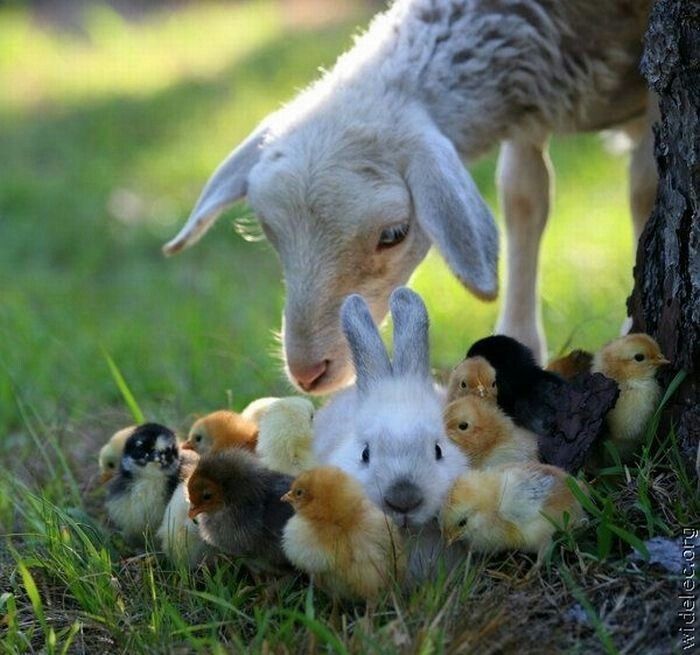
There are internal defensive adaptations such as snakes producing venom in their bodies, skunks producing bad-smelling spray, horned toads squirting blood from their eyes, and millipedes secreting toxins through their skin. Still other animals have bodies that secrete slime, like snails who use it to glide smoothly across the ground, or hagfish who choke their attackers with slime.
Another adaptation is specially developed senses of hearing, smell, or sight that far surpass human abilities. For example, the African elephant has 2,000 scent receptors in its nose, compared to humans’ 400 receptors. A peregrine falcon’s eyesight is so acute that it can spot a mouse a mile away.
Most adaptations do not operate singly, but rather work together to ensure the animal’s survival. Most people know that the giraffe has a very long neck that helps it reach leaves in the tops of trees (a body-part adaptation), but what may be less obvious is the giraffe’s extra-large heart that pumps blood up that long neck to reach its brain (a physiological adaptation.) In addition, it has a spotted coat for camouflage, an 18-inch tongue that can wrap around branches, and the ability to drink 12 gallons of water at once when it comes upon a scarce water hole. All of these adaptations, working together, help the giraffe succeed in its environment.
Behavioral Adaptations
Like physical adaptations, behavioral adaptations improve animals’ chances for survival.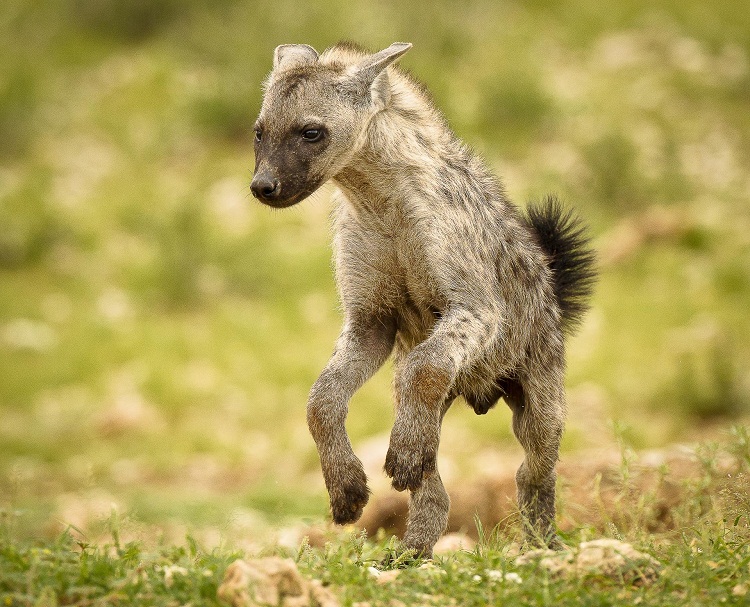
One of the most important behavioral adaptations is living together in groups. These groups are often referred to as herds, families, colonies, flocks and packs, but there are many unique names for animal groups such as a pod of whales, a school of fish, or a pride of lions. These groups may consist of hundreds of animals or just a few. Living in groups allows animals to help each other find food, defend against predators and care for young. When many zebras stand or move together in a group, the abundance of stripes makes it more difficult for a lion to pick out and hunt one individual zebra. Although a fully grown bison is safe from most predators, bison live in herds and form circles to protect their young. Some predators such as wolves hunt as a group, working together to bring down larger prey.
Another behavioral adaptation is migration. Migrating animals travel from one place to another depending on seasonal conditions. Migration is an adaptation that helps some animals cope with the climate and find places to obtain food and have their young. Birds, whales, bats and monarch butterflies are well-known for their annual migration between northern and southern regions. Some animals migrate a short distance from high mountains to lower valleys, while others cover large parts of the globe with their migration routes. For example, the Arctic tern travels 25,000 miles in its annual migration. Learn more about animal migration.
Hibernation is another adaptation that allows some animals to successfully survive when weather conditions are harsh and resources are scarce. A hibernating animal goes to sleep or is dormant during cold weather. They remain safe by hiding in dens or burrows. Their heartbeat and breathing slow down.
Some animals are referred to as nocturnal, which mean they are active at night. For desert animals, this adaptation allows them to search for food when temperatures are cooler. Other animals burrow into the ground during the day to avoid the harsh conditions during the day.
Many behavioral adaptations are defensive. These behaviors are designed to help animals protect themselves from danger. A blowfish (right) has the ability to puff up its body to twice its normal size to scare off attackers. Possums go stiff and «play dead» to make predators think they are not alive. The three-banded armadillo can curl itself into a ball where it is protected by its armor. A porcupine turns its quills toward a threatening intruder. A nesting killdeer will pretend to be injured to lure a predator away from her young.
Still other behavioral adaptations have the purpose of courtship. In order for the species to continue, animals must attract a mate and have young. The male sage grouse attracts a female by inflating his neck pouch and fanning his feathers. Some male penguins offer stones for nest-building as gifts to the females. The albatross performs an elaborate courtship ritual where he dances, leaps, sings, and points his beak to the sky. Male elk «bugle» to attract females and to announce dominance over other males.
Not all animal behaviors are adaptations. A raccoon who repeatedly seeks food in a local trash can, a deer who stays away from a yard with motion-activated night lights, or a bird who avoids bad-tasting insects after eating one, are all exhibiting learned behaviors.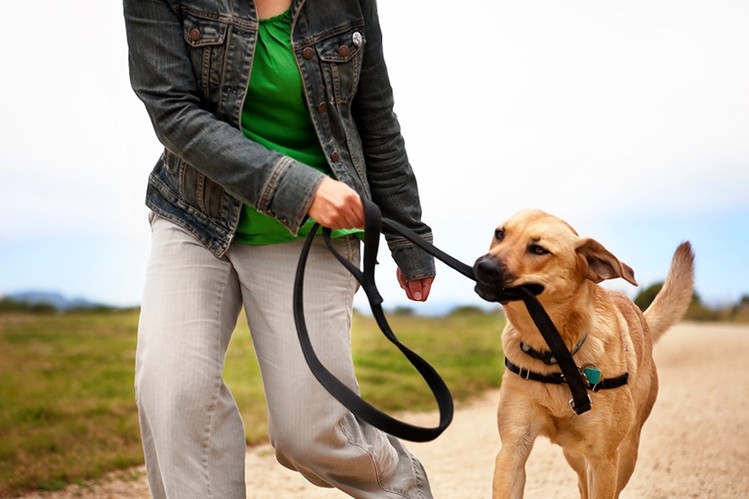
Prey, Predator, and Scavenger
Some animals eat other animals (predators), some try to keep from being eaten (prey), and others clean up the remains of dead animals (scavengers.) Predators are not villains — like all organisms, including humans, they are getting the energy (food) they need to survive. Each creature is necessary to the cycle of life. All animals in a natural ecosystem have a different «job» or ecological niche, and all adaptations help organisms to be successful in their niches. Whether an animal is predator or prey, it must have necessary adaptations to live another day, or it will not survive.
Many prey animals have developed a variety of adaptations to protect themselves from becoming a predator’s dinner. In order to survive, prey animals rely on camouflage, warning signals, well-developed senses, weapon-like body parts, and defensive behaviors.
Predators also have camouflage coloring and blend in with their surroundings, but for them the purpose is to hide when hunting prey. Other adaptations that make an animal a successful predator include body parts like sharp teeth, strong jaws or razor-like talons, physiological adaptations such as producing deadly venom, and behaviors like hunting in groups and stalking (sneaking up on) their prey.
Even scavengers have special adaptations. They use their excellent sense of smell to find their food — dead animals. Why does a vulture have a featherless head? This bird often feeds by putting its head into the bodies of dead animals. After it eats, its bare skin is exposed to the sun’s heat which kills harmful bacteria that might have rubbed off from the decaying meat. A clean head keeps a vulture healthy, so it can live another day. In addition, the digestive track of vultures has an adaptation that allows vultures to not get sick from any diseased animals that they eat.
In all habitats, adaptations make the complex, interconnected food webs work.
Adapting to Environmental Change
Over time, environments can change and become drier, wetter, hotter, colder, darker or sunnier. Since adaptations develop to help animals survive in a specific habitat, what happens if the environment begins to change, and those adaptations no longer help the animal? If an animal’s food source disappears, adaptations that help them find that food will no longer be useful. Sometimes even a small change in temperature or water quality can mean big problems for animals that have adapted to survive under certain conditions. Altered environments have meant extinction for some animals. When habitats change, in order to survive animals must either move to new areas, or respond to those changes through adaptations. For example, a species living in water that becomes more acidic might adapt by slowly shifting its own body chemistry.
Dark and light colored peppered moths, Wikimedia Commons
Adaptations may cause an increase or decrease in populations of animals with certain traits.

Today, climate change and rising temperatures threaten many animals who are adapted to certain conditions. While some organisms may not survive in their usual habitats, it is possible that we will see changing adaptations in some species. One example is the colored feathers of the tawny owl. This owl comes in two colors, pale brown and gray. The gray color helps it to blend in with snowy trees to hide from predators. Due to rising temperatures, there has been less snowfall in some areas. Because of the decreased snow, there has been an increase in brown-feathered tawny owls in the past 40 years.
Plant Adaptations
Do plants have adaptations too? Yes! Just as with animals, plants must be adapted to their environment. And just as with animals, adaptations help plants survive the climate conditions, defend against predators, and reproduce.
Tropical plantsArctic plants
Plants make their own food using water and sunlight absorbed through their leaves.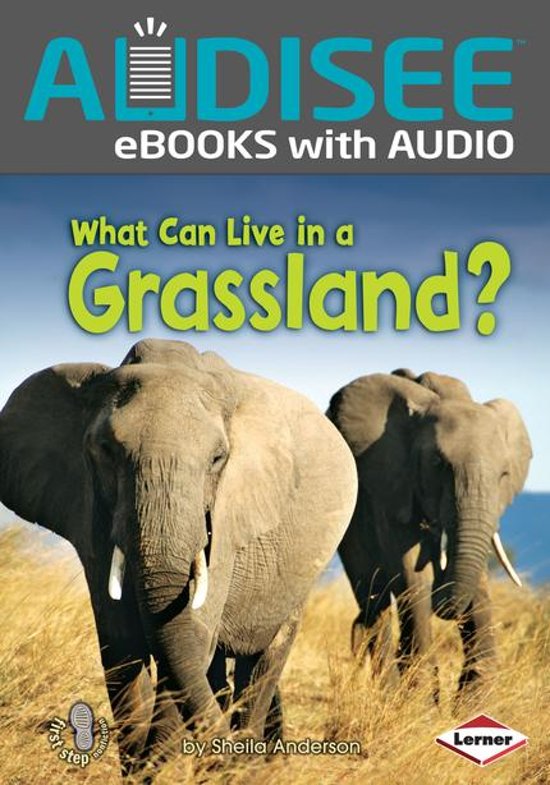
Desert plants
Some plants protect themselves from predators with leaves that contain poisonous oils that irritate or even kill an organism that tries to eat them. Other plants have thorns to keep predators away. In desert plants such as cacti, sharp spines and thick skin also protect the cactus’s water store from predators.
Like animals, plants must reproduce. This is done through seeds that need sunlight, water, and a place to grow. Special adaptations help seeds move to new areas where they can grow. Some trees have adapted so that heat from wildfire opens their seed cones and disperses the seeds. Some plants have seeds with hard coats that float down rivers or streams to take root somewhere else. There are plants that have seeds with hooks or barbs that attach to animals’ fur to be carried away. Some seeds are heavy and fall down to the ground, while others have «wings» and are light enough to be carried long distances by the wind. Some plant adaptations can even help establish new habitats through seed dispersal. Learn more about plant adaptations.
How Do Humans Mimic Animal Adaptations?
The most important human adaptation is our large brains which allow us to think and solve problems. Animal adaptions often give humans good ideas about surviving in different habitats.
How do animals give us ideas for staying dry on a rainy day? We wear slippery, water-resistant raincoats that makes rain run off like a duck’s feathers do. How do people use the idea of a turtle’s hard shell to keep safe? We put on bike helmets to protect our heads. How do animals give us ideas for moving through water? Divers use flippers like those of sea turtles to propel them in the water.
How do animals give us ideas about staying warm when it is cold? Early humans in cold climates copied animal adaptations by wrapping themselves in furry animal skins to keep warm. To this day, people put on warm, thick coats in cold weather. Sleeping bags and jackets are often made of bird feathers for insulation.
Baseball players put dark marks under their eyes, like a cheetah or a meerkat, to cut down on sun glare. Competitive swimmers use special swimsuits modeled after sharkskin.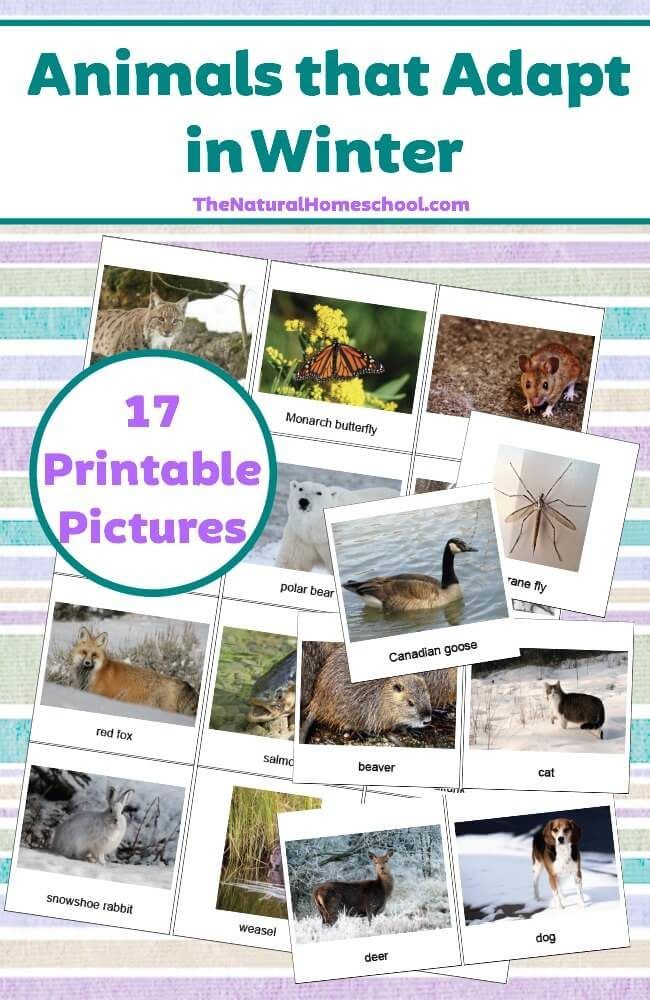
Fun Facts: Amazing Adaptations
Every habitat on our planet is home to different animals and plants who are uniquely adapted to live there. It is fascinating to explore the amazing adaptations found in the animal world. Here are just a few.
- Alaskan Wood Frogs’ bodies freeze solid during the winter. They stop breathing and their hearts stop beating. This allows them to survive temperatures as low as -80 degrees Fahrenheit. To achieve this frozen state, they build high concentrations of chemicals in their bodies that prevent their cells from shrinking or dying. And in spring, they thaw out and «come back to life.»
- Roadrunners, kangaroo rats, and some gazelles can survive their whole lives without ever taking one sip of water.
These desert animals get all the moisture they need from the food in their diets.
- Tubeworms turn toxic water into food. They live near thermal vents deep in the ocean, in water filled with toxic gas and acid. Bacteria inside the worms use the chemicals in the water as an energy source to produce food.
- Lungless salamanders have an incredible adaptation — they have no lungs! They breathe through their skin, absorbing oxygen from the surrounding air.
- African bullfrogs create homes out of mucous to survive the dry season. They bury themselves underground inside a mucous sac which hardens into a cocoon. The frog can stay in this cocoon for up to seven years while it waits for rain! When the rain finally comes, it softens the mucous house and wakes up the frog.
- Leopards have a behavioral adaptation that helps them protect their food. After hunting and killing their prey, leopards carry their prey up high into trees.
Their powerful jaws are so strong that they can carry a dead animal that weighs three times their own weight up into the branches of a tree. Once in the tree, the dead prey is safe from animals like hyenas and lions that might steal their food.
- Honeybees have several amazing adaptations: they can communicate the location of nectar to other bees through performing a dance, they can sense the earth’s magnetic field, and they can detect electromagnetic waves in the atmosphere that indicate thunderstorms on the way!
- Flying lemurs have folds of skin that stretch between their limbs, allowing them to glide up to 320 feet from branch to branch in the rainforest canopy. With this adaptation, they live their entire lives in the tops of the trees. This is important because their feet are well adapted for climbing, but are nearly useless for ground speed.
- Peacock flounders can change their patterns and colors to match their surroundings in the ocean, often within minutes.
The four photos at right show the same flounder changing its coloration as it moves to different backgrounds.
Kangaroo rat, Wikimedia Commons
African bullfrog, Wikimedia Commons
Honeybee colony
Peacock Flounder, Camouflage Facts For Kids, Kiddle Encyclopedia
Learn more about animal adaptations at the Science Trek pages on Food Web, Zoology, Botany, Ecology, and Habitat. You also may want to explore the Science Trek pages for specific animals that describe the adaptations that help them survive. You’ll find that the more you learn about animals, the more you’ll discover about amazing adaptations throughout the natural world.
24 Animals That Adapted To Their Environments
There are millions of species of animals on earth living on all continents. From the smallest sea creature to the African lion, each animal has carved out its role in its ecosystem. To be able to do that these animals had to adapt over many generations. Animals that have adapted to their environments were forced to do so by nature to increase their chances of survival, and that’s what is most important. Survival. In this article we’re going to look at some of these animals that I found to be notable or interesting.
But first, let’s learn a little bit about animal adaptions and how they’re grouped.
What is an animal adaptation?
Animal adaptations are physical or behavioral characteristics of an animal or type of animal which contribute to its survival. These adaptations happen slowly over time, usually over many generations. Each of these characteristics are categorized in one of three groups: body parts, body coverings, or behavior.
Each category is pretty straightforward and means what you think.
1. Body part adaptations
Webbed feet
A body part adaptation refers to a body part of the animal that has changed over time to better suit survival in the animal’s environment. Here are some examples of body part adaptations.
- Webbed feet
- Sharp claws
- Wings
- Hooves
2. Body covering adaptations
Scales
A body covering adaptation refers to when the skin, or covering of the animal has changed and adapted over time to better suit survival in the animal’s environment.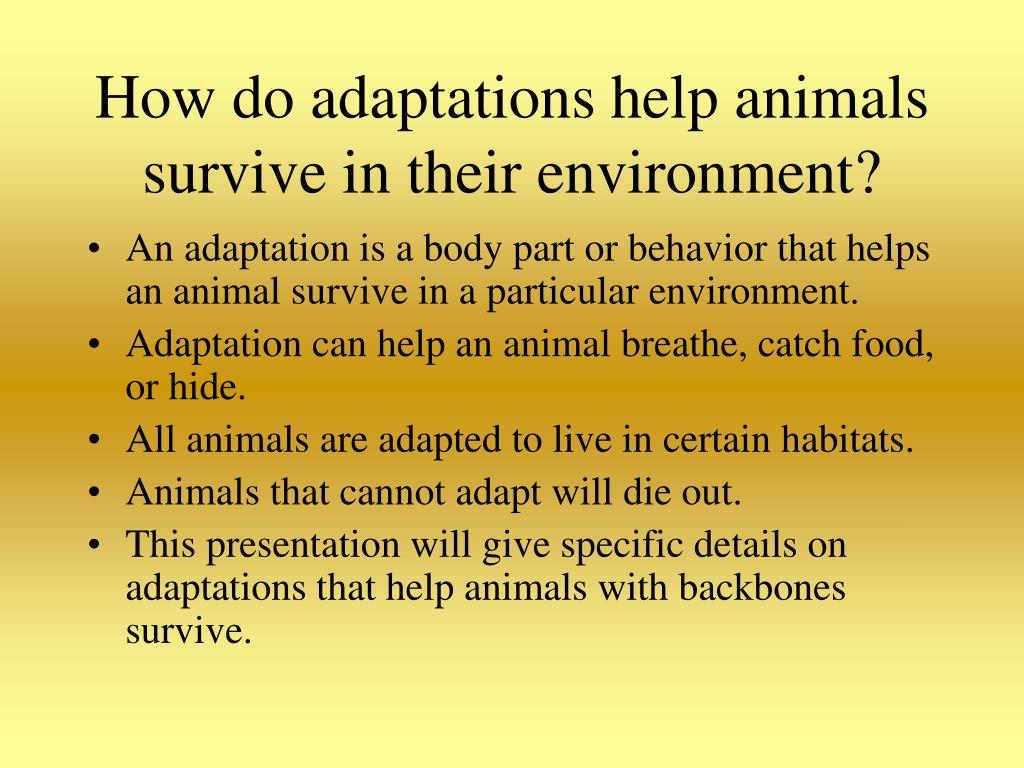
- Striped or spotted fur
- Scales
- Feathers
3. Behavioral adaptations
Birds migrating
Behavioral adaptations in animals refers to the actions or behavior of an animal changing over time to increase its chances of survival. Here are some examples of behavioral adaptations in animals.
- Instincts
- Hibernation
- Migration
Now that you understand what an animal adaption is, let’s look at some examples!
24 examples of animals that have adapted to their environments
Here are 24 examples of animals that have adapted in some strange and interesting ways in order to survive. These random animals are from all over the world and all have some interesting physical and behavioral adaptations.
1. Camels
2. Polar bears
3. Penguins
4. Sloths
5.
6. Chameleons
7. Giraffes
8. Hummingbirds
9. Rattlesnakes
10. Mountain goats
11. Snow leopards
11. Crocodiles
12. Armadillos
13. Skunks
14. Cheetahs
15. Owls
16. Woodpeckers
17. Elephants
18. Wolves
19. Leopard geckos
20. Eagles
21. Tigers
22. Opossums
23. Octopus
24. Beavers
1. Camels
Desert animals like camels have adapted over thousands of years for life in an environment where there is little water available for long periods of time.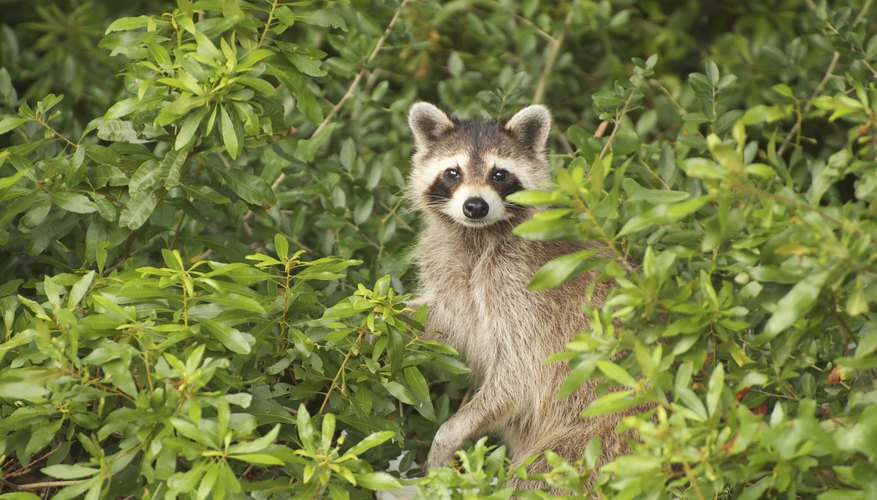
The hump stores excess fat. So while the hump doesn’t actually store water, it does help the camel go a long time without water. These adaptations reduced the frequency in which camels need to drink water to survive. Camels can go up to 7 months without drinking any water.
2. Polar bears
A polar bear’s white appearance give’s it camouflage on the snow and ice, this is an adaptation that keeps them hidden from prey. Polar bears also have thick layers of fat and fur that keep them warm in the coldest weather and even in icy waters. In addition, polar bears have learned to become excellent swimmers and spend long periods of time in and under the water. Their favorite food lives in and around these cold waters, seals.
3. Penguins
I think one of the most obvious animal adaptation of the penguin is the ability to swim.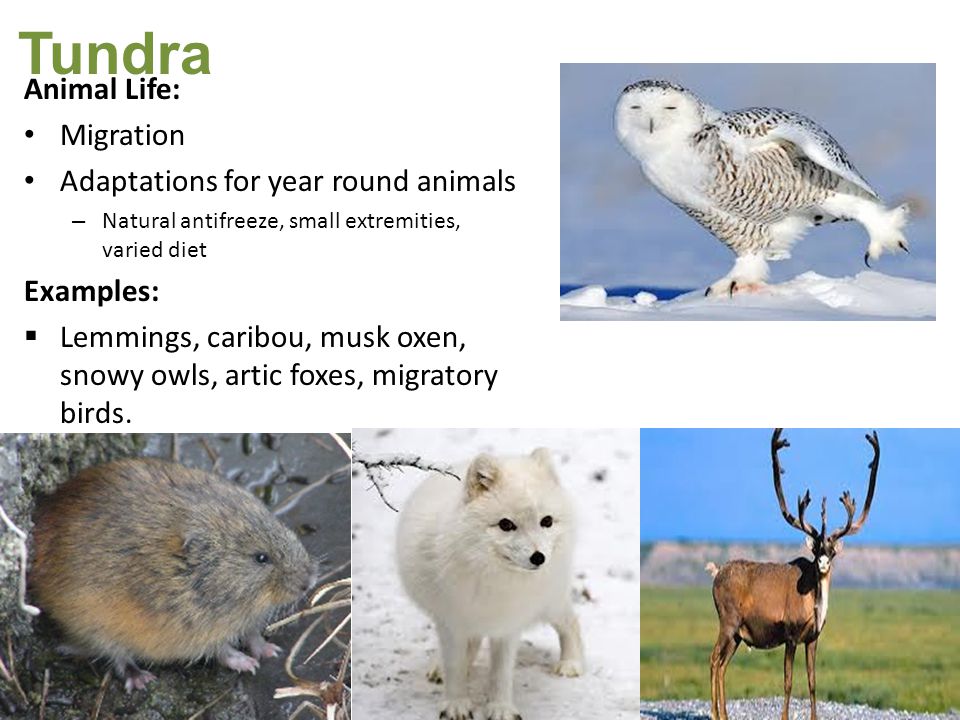
4. Sloths
The three-toed sloth has adapted to life in the trees, so much so that they rarely even come down to the ground. The trees provide safety and sloths have learned to live most of their lives in the trees. Just as the name implies, a three-toed sloth has 3 toes with 3 long claws that allow it to securely hang onto branches.
A sloth’s long arms are another body part adaptation, and a sloth’s laziness and slowness are a behavioral adaptation that the animal developed to help it stay unseen by predators.
5. Raccoons
Raccoons have adapted to eat just about anything they can find, and live just about anywhere too.
6. Chameleons
image: Pixabay.com
Chameleons are amazing creatures that have some of the most notable adaptations I can think of. The first one that comes to mind for myself and probably most people is their ability to change color in order to hide from predators and prey.
This is not only a behavioral adaptation but also a body covering adaptation as well. Then of course you have their unique eyeballs that swivel allowing them an almost 360 view of their surroundings at all times. In addition to that chameleons have specialized feet and tails that make them excellent climbers.
7. Giraffes
Another common animal adaptation is a giraffe’s long neck.
Similar to camels, giraffes have also adapted to life in a region where water may be scarce. These herbivores can go weeks without water if needed and also consume most of their water from morning dew and the plants they eat.
8. Hummingbirds
These little guys are full of animal adaptations. Here are a few of the adaptations that make hummingbirds special and allow them to survive.
- A hummingbird has a long beak and an even longer tongue that helps it drink nectar.
- Hummingbirds have special wings suited for hovering at flowers, they’re the only types of birds that can fly forward, backward, or any other direction.
- Their small size is also an adaptation that allows them to move so quickly and be so nimble.
9. Rattlesnakes
I think the most obvious adaptation of the rattlesnake is the rattle they have at the end of the tail. Their venom is also an adaptation that helps them survive. However the rattle is kind of like a warning saying “hey, I also have venom don’t make me use it on you”. In addition to that, a rattlesnakes scales and patterns help them to blend in with their surroundings and make them very hard to notice when they are still. For both predators and prey.
10. Mountain goats
You may not instantly think they are one of the best climbers in the animal kingdom when you look at them, but they are. Ibex like the one in this picture have special hooves that help them grip rocks and safely descend and ascend steep mountainsides like this one. Their legs are also very powerful. The males have large horns that are used to fight with other males during mating season to claim the right to breed with females.
11. Snow leopards
A snow leopard’s fur is thick to keep it warm in the cold climates, and the color and spots help camouflage it from prey when hunting.
It’s believed that snow leopards can see 6 times better than a human which allows them to better spot prey from great distances. You may also notice that they have this extra long and bush tail, it helps them keep balance on the rocky slopes and terrain in their habitat.
11. Crocodiles
Crocodiles have adapted over at least 200 million years. They are the ultimate survivors and will likely be around long after humans are gone from the earth. Their thick hides and scales protect them from anything that dares to oppose them, and helps them blend in with the bottom of a river.
Another interesting physical adaptation is where their nostrils and eyeballs are located on their heads. You’ll see from the picture above that a crocodile can keep about 95% of its body submerged while hunting for prey making it a very stealthy predator. This is a body part adaptation that makes them more efficient hunters.
12. Armadillos
Armadillos are only found in the Americas, primarily in Central and South America. Though one species is found in North America and it’s range is expanding further north each year, so it’s adapting to cooler climates. That would be the little guy pictured above, the nine-banded armadillo. Aside from adapting to colder winters, armadillos also have a cool body covering adaptation that protects them from predators that might otherwise eat them.
13. Skunks
The most famous adaptations a skunk has is its stripes and its spray. It’s pretty obvious that the spray is used for defense against predators and other foes. The stripes are the there to simply tell everyone “I am a skunk” and am not to be trifled with. Other animals just know not to mess with a skunk, and those black and white stripes are unmistakable. Check out this article for some interesting facts about skunks.
14. Cheetahs
Peregrine falcons are the fastest animals on earth, but cheetahs are the fastest land animals.
15. Owls
Owls are a very unique type of bird and have adapted in many that help them survive. One is that owls have amazing hearing. In fact, it’s believed that the barn owl has better hearing than any other animal on the planet.
Owls can hunt in the complete dark by sound only, pinpointing a mouse from over a hundred yards away. Aside from their amazing hearing, an owl’s neck can rotate 270 degrees giving it a very wide view of its surrounding. Owls also have great camouflage making them near impossible to spot while they’re sitting completely still in a tree. All this things put together equal a highly efficient predator.
16. Woodpeckers
Woodpeckers are unique and different from other birds in many ways.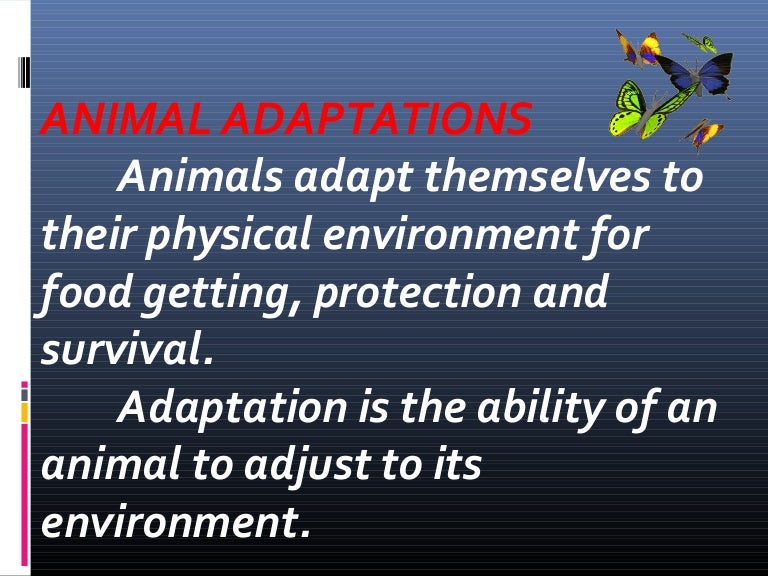
Because of this they have special feet, the technical term is zygodactyl feet, that let them grab onto trees better and even walk up and down them. You can see in this diagram what woodpecker feet look like compared to other birds.
17. Elephants
Like many animals, elephants have adapted to their environments in dozens of noticeable ways. For instance, and elephants hide is extremely thick to protect it not only from predators but from the blistering heat where it lives. An elephant’s tusks are used for protection against predators as well as for digging and competing with other elephants. Whoever has the biggest tusks is usually the boss. Finally, I have to mention the elephant’s big nose, aka its trunk, which is used for smelling, picking things up, and reaching things they normally wouldn’t be able to.
18. Wolves
A wolf has thick fur for warmth, sharp teeth to aid in hunting and eating, great night vision, and an amazing sense of smell. Modern day domesticated dogs that descended from wolves still have many of these same adaptations, depending on the breed of course. Wolves are apex predators and adapted over many generations to become highly efficient hunters and masters of survival.
19. Leopard geckos
Leopard Gecko – Jessi Swick | Flickr | CC 2.0
The most obvious adaptation for the leopard gecko is their spots and unique patterns which is a body covering adaptation. Leopard geckos don’t change color like chameleons do, but their patterns and spots do blend in with their environment quite well. A behavioral adaptation of this lizard is that they are known for detaching their tails in the face of danger. A dropped tail that is still wiggling on the ground will often distract a predator for just long enough for the gecko to scurry away to safety.
20. Eagles
The last type of bird on this list of animal adaptations are eagles. Eagles are birds of prey and are the apex predators of the sky. They have evolved to have excellent sight, sharp beaks, and powerful talons that all aid in hunting prey. Eagles are generally considered the largest of all types of birds of prey, allowing them to go for larger prey. An adult golden eagle can even take down a small deer.
21. Tigers
image: Pixabay.com
I think tiger’s are most famous for their stripes, which are a body covering adaptation that act as camouflage in the jungles where they live. Tigers have amazing strength and size that allow them to take down large prey and their sharp teeth will snap most animals necks in one bite. Tigers also have excellent vision which aids them when they are hunting for prey.
22. Opossums
image: Myoung
The Virginia opossum is the only marsupial that lives in North America, and they’ve adapted to their environments in various like all other animals.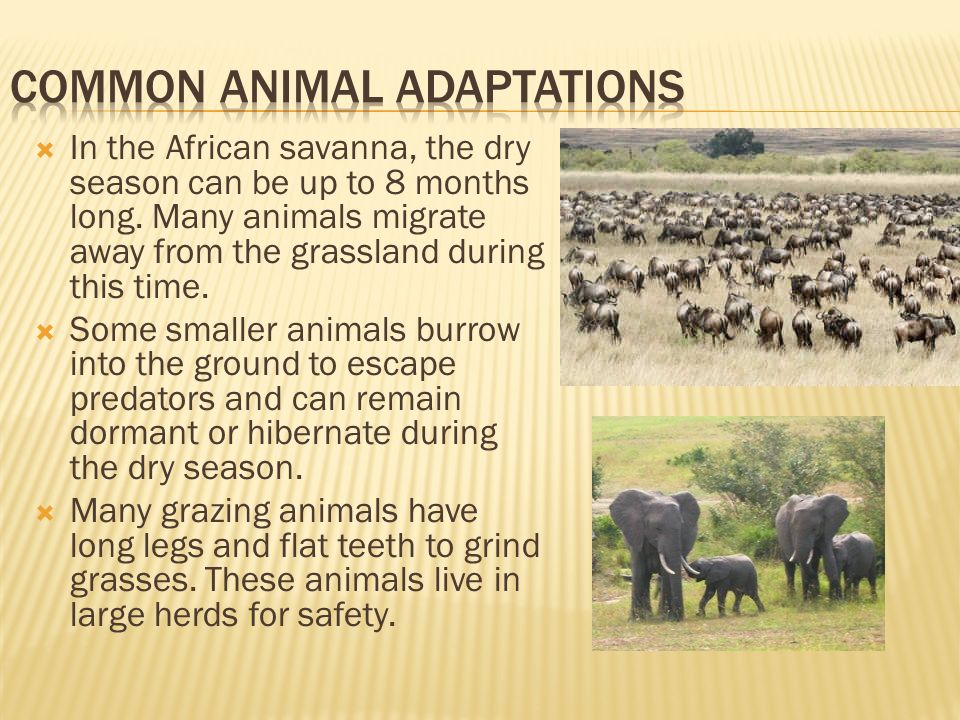
23. Octopus
In my opinion octopuses have some of the most amazing adaptations on this list. I used to think that chameleons were the kings when it came to color changing until I saw an octopus do it. They don’t blend in to their environments but become a part of their environment, it’s really quite impressive to watch.
Not only can they mimic colors, but also textures. They can make their skin the color of and the texture of a rock that they see. They have adapted to do this as it’s their primary defense against predators. On top of that, they are extremely intelligent and have been seen using tools in many cases. Something that very few animals on the planet do.
24.

Beavers are rodents that have adapted to a mostly aquatic life in the water. Their large front teeth never stop growing throughout their lives, so they must constantly use them to chew on wood. They can take down an entire tree in about 15-20 minutes and drag it into the water where they build dams.
These dams can divert water flows of rivers and stream totally changing the ecosystems. A beaver’s thick coat keeps it warm while spending so much time in the water. Beavers are herbivores that have adapted to not only eating leaves and plants but also wood, tree bark and roots.
Adaptation and Survival | National Geographic Society
Any number of characteristics can vary among individuals of a given species — some may be larger, hairier, fight off infections better, or have smaller ears. These characteristics are largely determined by their genes, which are passed down from their parents and subsequently passed down to their own offspring. Some of these characteristics, or traits, provide competitive advantages like speed, strength, or attractiveness.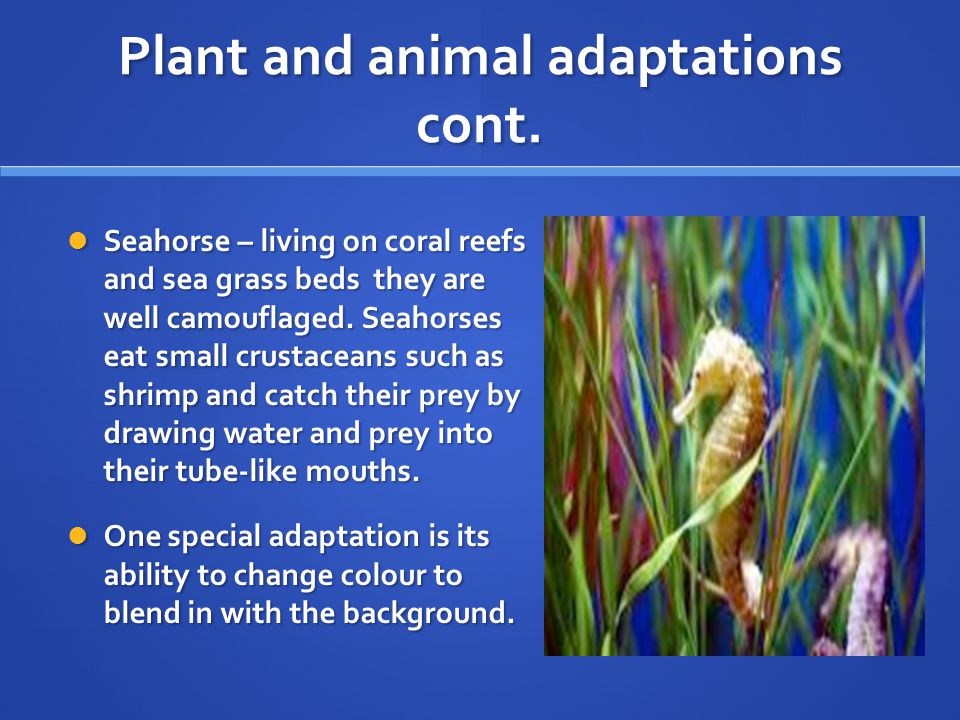
Structural and Behavioral Adaptations
An adaptation can be structural, meaning it is a physical part of the organism. An adaptation can also be behavioral, affecting the way an organism responds to its environment.
An example of a structural adaptation is the way some plants have adapted to life in dry, hot deserts. Plants called succulents have adapted to this climate by storing water in their short, thick stems and leaves.
Seasonal migration is an example of a behavioral adaptation. Gray whales (Eschrichtius robustus) migrate thousands of kilometers every year as they swim from the cold Arctic Ocean in summer to the warm waters off the coast of Mexico to winter. Grey whale calves are born in the warm southern water, and then travel in groups called pods to the nutrient-rich waters of the Arctic.
Adaptations that develop in response to one challenge sometimes help with or become co-opted for another. Feathers were probably first adaptations for tactile sense or regulating temperature. Later, feathers became longer and stiffer, allowing for gliding and then for flight. Such traits are called exaptations.
Some traits, on the other hand, lose their function when other adaptations become more important or when the environment changes. Evidence of these traits remain in a vestigial form — reduced or functionless. Whales and dolphins have vestigial leg bones, the remains of an adaptation (legs) that their ancestors used to walk.
Habitat
Adaptations often develop in response to a change in the organisms’ habitat.
A famous example of an animal adapting to a change in its environment is England’s peppered moth (Biston betularia). Prior to the 19th century, the most common type of this moth was cream-colored with darker spots. Few peppered moths were gray or black.
As the Industrial Revolution changed the environment, the appearance of the peppered moth changed. The darker-colored moths, which were rare, began to thrive in the urban atmosphere. Their sooty color blended in with the trees, which were stained by industrial pollution. Birds couldn’t see the dark moths as well, so they ate the cream-colored moths instead. The cream-colored moths began to make a comeback after the United Kingdom passed laws that limited air pollution.
Speciation
Sometimes, an adaptation or set of adaptations develops that splits one species into two. This process is known as speciation.
Marsupials in Oceania are an example of adaptive radiation, a type of speciation in which species develop to fill a variety of empty ecological niches. Marsupials, mammals that carry their developing young in pouches after a short pregnancy, arrived in Oceania before the land split from Asia. Placental mammals, animals that carry their young to term in the mother’s womb, came to dominate every other continent, but not Oceania.
The cichlid fish found in many of Africa’s lakes exhibit another type of speciation, sympatric speciation. Sympatric speciation is the opposite of physical isolation. It happens when species share the same habitat. Adaptations have allowed hundreds of varieties of cichlids to live in Lake Malawi. Each species of cichlid has a unique, specialized diet: One type of cichlid may eat only insects, another may eat only algae, another may feed only on other fish.
Coadaptation
Organisms sometimes adapt with and to other organisms. This is called coadaptation. Certain flowers produce nectar to appeal to hummingbirds. Hummingbirds, in turn, have adapted long, thin beaks to extract the nectar from certain flowers.
Mimicry is another type of coadaptation. In mimicry, one organism has adapted to resemble another. The harmless king snake (sometimes called a milk snake) has adapted a color pattern that resembles the deadly coral snake. This mimicry keeps predators away from the king snake.
The mimic octopus (Thaumoctopus mimicus) has behavioral as well as structural adaptations. This species of octopus can copy the look and movements of other animals, such as sea snakes, flatfish, jellyfish, and shrimp.
Coadaptation can also limit an organism’s ability to adapt to new changes in their habitat. This can lead to co-extinction. In southern England, the large blue butterfly adapted to eat red ants.
Articles & Profiles
National Geographic News: Three High-Altitude Peoples, Three Adaptations to Thin AirNational Geographic News: Tetrapod Fossil Discovery—Fins to Limbs
Interactives
Earth Day Canada: Animal Adaptations
Animal adaptation | TheSchoolRun
What is animal adaptation?
When the weather gets cold, you put on a coat to keep warm. If it’s hot, you wear a hat or fan yourself to cool down. Those are both ways of adapting to your habitat. While animals don’t have clothes, they do have built-in ways of keeping the right temperature and protecting themselves in the habitat they live in.
Over many years and generations, animals have changed in order to survive and thrive in the environments they live in. This process is called adaptation.
There are a number of ways that animals adapt – these can be inside our outside their bodies, in ways that they act, or even in ways that they work with other animals in their habitat.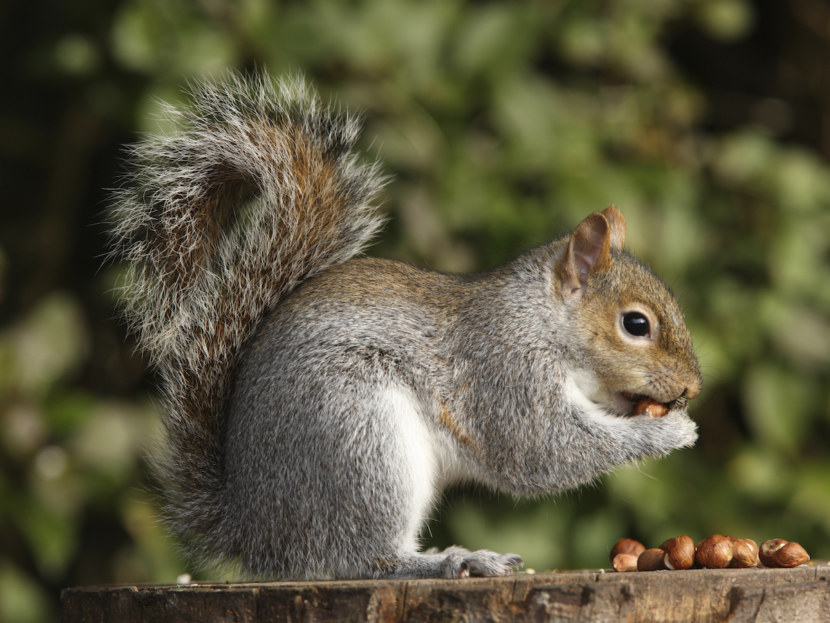
Every habitat on our planet is home to different animals and plants who are uniquely adapted to live there.
Top 10 facts
- In order to survive, animals need to make sure they have food, water, oxygen, shelter, and a place to raise their offspring.
- Animal adaptation describes all the ways that animals know how to survive in their habitat.
- Animal adaptation doesn’t happen immediately – it’s taken many years of new generations of animals being born with characteristics that have suited their habitat better.
- The same kind of animal, like an owl, can have many different species that are each adapted to different habitats.
Owls live all over the world in many different climates.
- Animals also adapt to their habitat through having special built-in things about themselves that protect themselves from predators. This can be poison that forms naturally on their skin, or just knowing the best places to hide when it’s time for a nap.
- Camouflage is one way animals have adapted to their environment – they’ve started looking like it! For example, animals that live in the Arctic often have white fur, which matches the colour of snow.
- Animals have had to adapt to the climate they live in, too. If it’s always very cold, they sometimes have an extra layer of fat to help keep them warm (like polar bears do).
- If a habitat gets too cold during the winter, some animals have adapted by just leaving it! They come back when it warms up again. This is called migration.
- Animals can also adapt by working together with other animals – this is called symbiosis.
Each animal has something that the other needs, and they help each other survive. It’s good teamwork!
- Plants adapt to their environment, too. For example, cacti in the desert have adapted by not needing much water to survive.
Boost Your Child’s Learning Today!
- Start your child on a tailored learning programme
- English & maths resources delivered each week to your dashboard
- Keep your child’s learning on track
Trial it for FREE today
Did you know?
An animal’s habitat is its home. It’s where it can find all the things it needs to survive:
- food – this can be plants, or other animals and insects, or all of those things
- water – this can be from a lake or river, or even the side of a plant
- oxygen – air to breathe
- shelter – a place to stay dry, to sleep, and to stay safe from predators
- a place to raise their offspring (babies) – a place where young animals can grow up safely and with all of the things they need
The reason why animals are happiest when they’re living in their natural habitat is because they’ve adapted to be comfortable there.
Adaptation takes a very long time – it’s part of how animals have evolved, and how different species of animals have come to be.
Animals are often the same colour as their habitat – and some can even change their colour to match where they’re sitting! This is called camouflage. For example, lots of animals in the rainforest are green – this is because the rainforest is mostly green.
Animals have camouflage so they can hide from anything trying to eat them for dinner, and also so they can hunt for food and catch their dinner by surprise. Different kinds of camouflage are:
- Blending into the background – having patterns on skin that look like the things around them; for example, turtle shells can look like rocks when they tuck their head and legs inside.
- Mimicking the habitat – looking like a plant that belongs in the habitat; for example, stick insects really look like sticks, which means their predators walk away thinking, ‘I don’t want to eat that stick…’
In habitats that get very cold, animals adapt by hibernating (sleeping for up to a few months at a time), or by migrating.
Look through the gallery below and see if you can spot the following:
- A dromedary camel with its very long eyelashes, and nostrils that can open and close
- The fennec fox’s long ears
- A jackrabbit’s long ears and powerful hind legs that help it move very quickly
- A raccoon
- This wood frog’s skin looks a lot like the branch it’s sitting on
- A porcupine and its quills
- A giraffe reaching leaves way up in the tree
- Black circles around a meerkat’s eyes
- A lioness’s sandy-coloured fur and long, rough tongue
- A stingray that’s buried itself in the ocean floor
- Clownfish in anemone tentacles
- A sea urchin’s spiky shell
- Emperor penguins huddling together to keep warm
- You can barely see the snowy owl in the snow… and behind all its feathers!
- A tapir swimming with its long nose held up out of the water
Gallery
About
Adaptations can be lots of different things, but they usually fall into one of these groups:
- Structural – things about animal inner and outer bodies that have helped them adapt to their environment, such as a giraffe’s tall neck that means it can eat leaves on tall trees.
- Physiological – special ways that animals’ bodies work to help them survive in whatever condition they’re in, such as camels in the desert conserving water and being able to go days without drinking.
- Behavioural – things that animals do that make life a lot easier in their habitat, such as meerkats in living in the ground so they stay safe from predators
Ways animals adapt in desert habitats:
- A dromedary camel can drink 30 gallons of water in 10 minutes. It also stores fat in its hump for extra energy (not water!), and can open and close its nostrils so it doesn’t breathe in sand when there’s a windstorm. Camels also have long eyelashes that bat sand away.
- The fennec fox has very long ears that help it keep cool by spreading out body heat. It also has special sorts of kidneys that conserve water, so the fox doesn’t need to drink very often. They also have thick fur on the bottom of their feet so they can walk over the hot desert ground.
- Jackrabbits are nocturnal animals, because it’s cooler in the evening and easier to hide from predators. They mostly sleep during the day, and they are herbivores. They eat plants that have a lot of water in them, so they don’t need to worry about finding water anywhere else in the dry desert. Jackrabbits have large ears, like the fennec fox. If they’re trying to get away from a predator, they move very quickly in a zigzag pattern to try to get away.
Ways animals adapt in forest and woodland habitats:
- Raccoons are nocturnal animals, and they have very good eyesight which helps them see at night. They are omnivorous and eat everything the forest has to offer – from nuts and berries on trees to fish in streams. They store up fat so they can sleep for a month or so at a time in the colder winter months, and they can even share a winter den with other animals like opossums and muskrats so everyone stays warm.
- Wood frogs have camouflaged skin so they blend into the background very well. They have a layer of mucous on their skin so they can slip away from predators. They can also hibernate in the winter when their habitat gets too cold for comfort.
- Porcupines are basically rodents (like rats) but they have a really amazing way to defend themselves. They’ve got about 30,000 sharp quills on their bodies that they can raise up to ward off a predator, but if the predator gets too close, the quills will stick straight onto its face. Ouch! Porcupines also like eating bark and twigs, so they’ve got sharp claws that help them climb up trees better.
Ways animals adapt in grassland habitats:
- Grasslands sometimes go a long time without water, but giraffes have adapted by not needing to drink water for weeks at a time. They can get by from the water in the leaves they eat, which they can reach because of their super-long necks.
Because giraffes are so tall, they can also see for a long way around them, which is helpful in the grassland where there aren’t many places to hide from predators.
- Meerkats live in areas that are almost like deserts – hot, dry and not much vegetation. They have dark rings around their eyes to stop glare from the sun, so they can see well even when it’s really bright outside. Because there aren’t many places to hide from predators, meerkats live in underground tunnels that give them a quick escape when they’re on the run. Meerkats live in big colonies where they share out jobs like minding babies, keeping watch for any danger and hunting for food.
- Even though lions are ‘the kings’, they have had to adapt to their habitat just like all the other animals have. Lion’s fur is the perfect sandy colour to blend into the African savannah, so they can sneak up on prey pretty easily. Lions talk to each other through their loud roar – it also sounds scary so any other predators know to steer clear.
Lions mostly sleep in the day to stay cool, and they hunt at night. When they do catch prey, they use their long claws as weapons and then eat their fresh meal by licking off skin and meat with their rough tongue.
Ways animals adapt in marine habitats:
- Stingrays have flat bodies and swim along the ocean floor. Their eyes are on the top of their body, and their mouth is on the bottom – so, they can see around them as they’re swimming along, and take in any food along the ocean floor. Since they’re already at the bottom of the sea, they can quickly bury themselves in dirt if a predator comes along. The way they breathe allows them to still take in oxygen even when they’re buried.
- Clownfish have tiny round fins and can’t swim very quickly, but they are able to get away from predators by going somewhere they can’t – a sea anemone with poisonous tentacles. Clownfish can do this because they have a layer of mucus over their scales that means the anemone doesn’t affect them.
Clownfish can also smell the anemone, so they know immediately when one is nearby even if they can’t see it.
- Sea urchins immediately put off predators because they’ve got spiny, spiky things coming out from a shell that completely covers their body. They can control their spikes and point them in the direction where they think they’re being threatened, too. They have special tube-like feet that suction them onto things so the water current doesn’t toss them around. They’ve also got five teeth on the bottom of their body so they can break down food while their shell protects them from above.
Ways animals adapt in polar habitats:
- Polar bears in the Arctic have white fur that helps them blend into the snowy background. They also have a thick layer of fat around their body to keep warm, and big paws with long hair that keeps them from slipping on ice. When there’s a snow or windstorm, polar bears can dig deep dens that protect them from the weather and keep them warm.
Even though they’re big animals, polar bears are good swimmers which means it’s easier for them to catch fish to eat.
- Emperor penguins are famous for the way they’ve adapted to their chilly habitat in Antarctica. Their streamlined shape helps them swim quickly and catch fish to eat, and their feathers provide a waterproof layer that means they won’t get too cold. When they’re out of the water, their black feathers soak in warmth from the sun, and penguins also swarm together in packs to help keep each other warm. They only lay one egg that they can sit on while they wait for it to hatch, and mum and dad take turns sitting on the egg and going to get food to make sure their little one has all the warmth they need.
- The snowy owl, like the polar bear, is white all over which helps it blend in with the snow. They’ve got layers of soft down feathers covered with larger, thicker feathers that provide insulation from the cold. The snowy owl has feathers everywhere – even on its toes! It eats a variety of different small animals so it’s not fussy about what’s for dinner, giving it the best chance of having enough food to survive.
Ways animals adapt in rainforest habitats:
- Toucans have very long beaks that are actually about one-third of their entire body length. But, these beaks are also lightweight, and mean that toucans can pick up large pieces of fruit, which they toss in the air and catch in the back of their beaks to eat. Toucans’ beaks also have blood vessels in them and release body heat, helping to keep them cool. Toucans keep balanced on trees in the rainforest by using their claws – two on the front and two on the back – to get a good grip that keeps them from falling down.
- Howler monkeys are one of the loudest animals on earth, which is how they get their name! They live up in the rainforest canopy, where it can be difficult to see very far around because there are lots of leaves and branches in the way. So, they use their loud voice to call out to other howler monkeys, and to make sure other animals know where their territory is.
They need to communicate with other howler monkeys because they all live in large communities – howler monkeys don’t move around very quickly, so they need friends to help protect each other from predators. Howler monkeys also wrap their tails around tree branches to keep from falling down.
- Tapirs are larger rainforest animals that live on the forest floor. They are herbivores, so it’s easy for them to find leaves, twigs and fruits to eat as they wander around. They have sloped shoulders that allow them to move around under bushes and shrubs, and small eyes deep in sockets that protect them from insects and bits of trees getting in. Tapirs have a long, flexible nose that can root into trees and bushes to grab food. They can go into shallow water, and use their noses as a snorkel to breathe!
Animals can also adapt to their habitat by working together to survive – this is called symbiosis. For example, in the African savannahs, birds called oxpeckers sit on the backs of zebras to pick off lice and other bugs.
Words to know
- Adaptation – all the ways that animals can survive in their habitat
- Camouflage – ways that animals can be unnoticed by their predators, or by their prey
- Carnivore – an animal that eats meat
- Climate – the temperature and weather of a certain part of the world
- Evolve – how animals change over long periods of time by getting characteristics in their bodies or in the way the behave that helps them adapt to their habitat
- Habitat – a place where an animal, plant, insect or any other living thing lives; it can be as big as an ocean, or as tiny as a log in a forest.
- Herbivore – an animal that only eats plants, and things that grow on plants like fruit and berries
- Hibernation – long sleeps that animals take in the winter to conserve heat and survive the chilliest months of the year
- Migration – travelling a long way to reach a new habitat that suits an animal better than its old one did; birds migrate south every winter to be in a warmer habitat, then they go back north in the spring
- Omnivore – an animal that eats both plants and meat
- Predator – something that hunts something else (its prey)
- Prey – something that is attacked by something else (its predator)
- Species – a particular kind of animal; a barn owl and a snowy owl are both species of owl
- Symbiosis – the ways that two species interact to help each other survive in their habitat
Related Videos
Just for fun.

- This game shows how animals in a forest depend on each other, and has a quiz about animal adaptation
- Complete an animal adaptations worksheet
- Take a KS2 animal adaptation quiz
- Adaptation dominoes and activities are included in a Marwell Wildlife learning pack
- Can you work out the evolutionary relationships linking different species together in Evolution Lab?
Best children’s books about animal adaptation
Find out more
- A BBC Bitesize animation to explain evolution for KS2 children
- Download a fantastic animal adaptation information pack from the Wildwood Trust
- Read about 5 amazing animal adaptations in the Galapagos Islands
- Videos and lots of information about animal and plant adaptations
- Evolution explained for children
- See how animals in the Arctic have adapted.
- Watch a cartoon about how the brown bear evolved into the polar bear
- Find out how a barn owl adapted to be a successful predator
- Short video clips about animal adaptations in desert habitats and kangaroo adaptation
- Understand more about Antarctic animal adaptations
- Watch videos about animal adaptations and the environment and natural selection
- Information about biogeography
See for yourself
Find out how how animal camouflage works
See examples of animal camouflage in the rainforest
Seven examples of animal symbiosis
Also see
How animals adapt to their environment: examples
Adaptation to new conditions for survival is the kind of natural «sport» in which humanity has an eternal gold medal.
Sergey Evtushenko
Basically, adaptation systems somehow relate to cold, which is quite logical — if you manage to survive in a deep minus, other dangers will not be so terrible. The same, by the way, applies to extremely high temperatures. Who is able to adapt, most likely will not disappear anywhere. Consider how animals have adapted to a cold climate.
Arctic hare
Arctic hare are the largest hares in North America, which for some reason have relatively short ears. This is a great example of what an animal can sacrifice to survive in harsh conditions — while long ears can help hear a predator, short ones reduce the release of precious heat, which is much more important for Arctic hare.
If we talk about physiological or structural adaptations, then thick fur is in the first place. This is a stunning gift from nature to arctic hares. This thick fur helps them keep their body warm, as well as protect them from cold and strong air currents. Their paws help them run quickly on top of the snow without sinking into it, and the white color of their fur also helps them survive through camouflage.
Some behavioral things also help to adapt to harsh environments. Their posture and orientation help them minimize their exposed body surface area. Similarly, while feeding and resting, they orient their body in such a way that the main air currents fall on their backs. Both of these behavioral modifications help them keep their body warm.
Rana sylvatica frog
Rana sylvatica frogs from Alaska, perhaps even surpassed Antarctic fish. They literally freeze into the ice in winter, thus waiting out the cold season, and come back to life in the spring.
Praying Mantises
Some types of praying mantises, unable to spend all day in the sun, cope with the problem of lack of heat through chemical reactions in their own body, concentrating flashes of heat inside for short-term heating.
To adapt to the cold, the mantis lays diapausing eggs. They are protected from environmental influences and resistant to low temperatures. Laying begins in summer and continues until late autumn. Eggs emerge from the female ovipositor and a sticky liquid is released, which creates a kind of protective capsule.
Cyst
Cyst is a temporary form of existence of bacteria and many unicellular organisms, in which the organism surrounds itself with a dense protective shell to protect itself from an aggressive external environment.
Nototheniform fish
Nototheniform fish live in Antarctic waters so cold that normal fish would freeze to death there. Sea water freezes only at a temperature of -2°C, which cannot be said about completely fresh blood. But Antarctic fish secrete a natural antifreeze protein that prevents ice crystals from forming in the blood — thanks to this, nototheniform fish have adapted to an aquatic habitat.
Megatheria
Megatheria adapts to harsh conditions by generating heat using body mass, thus surviving in cold conditions even without antifreeze in the blood. Some sea turtles take advantage of this by remaining mobile when the water around them almost freezes.
Asian mountain geese
Asian mountain geese, when crossing the Himalayas, rise to great heights.
Mudskippers
Mudskippers are not the most common fish, although they belong to rather banal gobies. At low tide, they crawl along the silt, getting their own food, climbing trees on occasion. In their way of life, mudskippers are much closer to amphibians, and only fins with gills betray fish in them. This species mainly lives in silt, which in turn creates good conditions for the adaptation of fish in the environment.
Microbacteria in black smokers
The ecosystem of «black smokers» — hydrothermal vents at the bottom of the oceans — is amazing. The water there is saturated with hydrogen sulfide and toxic substances, but life is seething in it, just like hundreds of millions of years ago.
Parrots in Nicaragua
One of the species of parrots in Nicaragua is so settled in the vicinity of the active Masaya volcano (the last eruption was in 2008) that it builds nests right in its crater. However, how did such a habitat allow parrots to adapt? It is not known how poisonous conditions do not kill desperate birds, but such tactics as a defense against predators work with a bang.
Beaks, paws, camouflage. How animals adapt to city life
- Fernando Duarte
- BBC World Service
Sign up for our ‘Context’ newsletter to help you understand what’s going on.
Image caption,
Japanese jackdaws use cars to crack open nut shells
For thousands of years, jackdaws in the Japanese city of Sendai have struggled to solve the most difficult task of cracking a walnut.
Walnuts are the main delicacy of these jackdaws, but their shell is too strong, the birds cannot crack it with their beak. Therefore, they used to take off with a nut in their beak higher and throw it so that the nut shattered on the ground.
But in the 1970s, a local ornithologist noticed that the birds had changed tactics. They began to throw nuts on the roadway, under the wheels of cars.
Sendai jackdaws are a classic example of how urbanization can change animal behavior.
Adapting to the metropolis
Photo credit, Getty Images
Image caption,
By 2050, about 70% of the world’s inhabitants will live in cities Earth (at 1960 this figure was 34%).
It is expected that by 2050, about 70% of all inhabitants of the Earth will live in cities.
This urban population growth has had a negative impact on wildlife and biodiversity, with many animals losing their habitat.
But urbanization has also led to a change in the behavior of a number of animals that have adapted to survival in cities.
«It’s important to understand the connection between urbanization and wildlife,» explains Dutch evolutionary biologist Menno Schiltheisen, who explores the topic in Darwin Moves to the City: How the Urban Jungle Stimulates Evolution.
«We are approaching a situation where the only nature available to most people will be urban nature,» says the scientist.
Image copyright, Getty Images
Image caption,
Spiders have learned to weave their webs on street lamps to get closer to moths that are attracted to the light
Rapid change
Schiltheisen and others say some examples of adaptation a consequence of the rapid evolutionary changes caused by man, that is, a rapid adaptation that takes only a few decades.
«Bridge spiders, which usually avoid light, weave webs on street lamps that attract moths. In a number of cities, moths, in turn, develop their ability to resist the beckoning power of light,» writes Schiltheisen in his book.
Such behavioral changes can be observed in different species, the city as such is the best place to observe their development.
«Urbanization represents the best and largest experiment in unintentional evolution,» says University of Toronto biologist Mark Johnson.
Photo credit, MTA handout
Photo caption,
Peregrine falcons adapted to urban environments and nested in skyscrapers
Johnson co-authored a paper published in 2017 in the journal Science, which examined patterns of urban animal adaptation based on 192 research.
It has been found that some animal species have found their niche in the urban environment. One example is the peregrine falcon, a bird of prey that became endangered in the mid-20th century due to high levels of chemical emissions.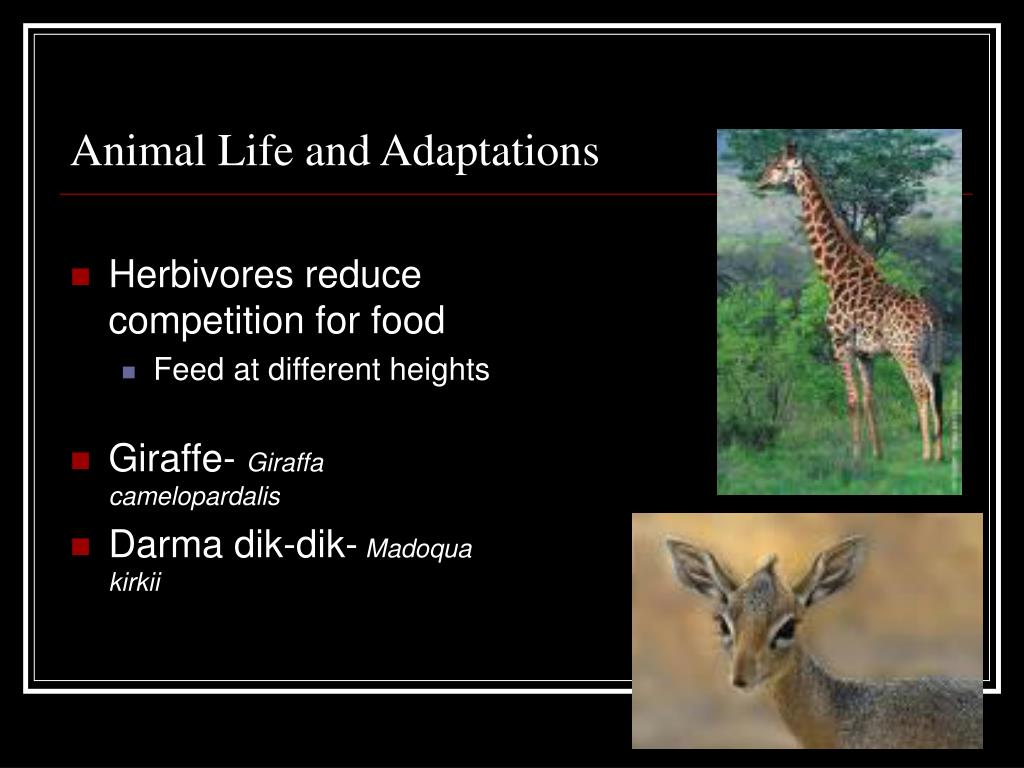
Peregrine falcons accumulated chemicals such as DDT (aka dust, an insecticide used against insects) because they hunted migratory birds, which in turn fed on insects.
Banning the use of DDT and implementing breeding programs allowed the species to survive, but not before these birds took refuge in the city, because habitat destruction also affected the preservation of the species.
Peregrine falcons moved to the cities, where they had to learn to nest on skyscrapers. The researchers also confirmed that peregrine falcons feed on a variety of animals common in cities, from pigeons to bats.
Longer and wider beaks
Darwin’s finches (also known as Galapagos finches) occupy an important place in the history of biology. It was them that Darwin studied in the Galapagos, it was they who helped him develop his theory of natural selection.
Birds had different sizes and shapes of beaks, thus adapting to a certain type of food on different islands.
But recently the attention of scientists has attracted finches from the US city of Tucson (Arizona). Their beaks have become longer and wider than those of their rural counterparts.
Reason? The shape of the beak makes it easier for them to pick up sunflower seeds from feeders.
«I think this is very compelling evidence that when we introduce new foods to animals, we interfere with natural selection,» says Christopher Witt, curator of birds at the American Museum of Southwest Biology.
Basement mosquitoes
Image copyright, Getty Images
Image caption,
London Underground mosquitoes are a clear example of adaptation and «rapid evolution»
The Pisk mosquito (or common mosquito) is the world’s most widespread mosquito species.
They are known for their adaptability. But the mosquitoes that live in the London Underground have bypassed them.
While peeping mosquitoes live above the ground in large mating swarms, underground (basement) mosquitoes thrive in man-made underground spaces.
The peeping mosquito prefers to bite birds, while the underground mosquito prefers human blood.
Image copyright, Getty Images
Image caption,
People who took refuge in London during World War II spoke of relentless mosquitoes
This mosquito was nicknamed the London Underground mosquito. Why, if it was singled out as a separate species back in the 18th century, when there was no subway yet?
Because it was in the subway during the Second World War that people got their first serious bites. The underground mosquito has adapted to the conditions of the London Underground, stagnant water and new food.
Light moth
Photo credit, Getty Images
Image caption,
Pigmentation on the wings is a matter of life and death for moths
Moth moth is another example of animal adaptation to humans.
With decades of industrialization in the UK in urban areas, the number of black individuals has risen sharply.
New improved standards for cleaning the atmosphere from harmful emissions have led to a cleanup of the environment and a new increase in the population of light color.
City frogs
Tungara frogs live on the edge of tropical forests from Mexico to northern South America and make a distinctive sound when they call females for mating.
Predators that hunt them also find them by this sound.
image copyrightSmithsonian Tropical Research Institute
Image caption,
A male Tungara frog calls his mate very characteristically
Researchers found that individuals living closer to urban environments developed a more varied system of loud calls that attracted females better than their rural and forest counterparts.
It would seem that now predators find them even easier. But near the cities there are much fewer predators, urban frogs do not have to be so afraid of them, which is why their mating calls have become bolder and more diverse.
Blackbirds sing at night
Photo copyright, Getty Images
Image caption
Urban blackbirds often sing at night
The blackbird is one of the world’s oldest and most studied urban animals.
Individuals living in urban and rural areas have certain differences. In Europe and North Africa, urban blackbirds have actually evolved into a new species. City birds have stronger beaks and do not migrate in winter.
There is also evidence that city noise forced them to change the pitch and timing of their singing.
Wood blackbirds are known to sing at dawn. The townspeople began to sing at night, a few hours before sunrise.
Smooth walls and sticky paws
Photo by Kristin Winchell
Image caption
Anole lizards have to adapt to life in cities
Puerto Rico anole lizards have had to become leaders in urban adaptation.
First they encountered smooth walls. Urban lizards have learned to overcome them by acquiring longer and stickier limbs.
«Urban areas are just a different habitat. The animals that live there are not at all alien to natural selection,» says Christine Winchell, a lizard biologist at Washington University in St. Louis.
Photo copyright Kristin Winchell
Photo caption
Urban lizard paws (left) are more adapted to the urban environment
«We found that in urban environments, lizards have more scales on their feet and larger toe pads,» she says.
Winchell has done several laboratory tests on urban and rural lizards and found that the urban lizards in this competition easily get ahead on slippery surfaces.
Studies have also shown that urban individuals have become more tolerant of higher temperatures.
Guinea pigs inherit the ability to adapt to environmental changes from their fathers
2457
Bookmark
Scientists from the Institute for Wildlife Research.
Leibniz (Leibniz-IZW) revealed that an important skill of adaptation to
environmental changes guinea pigs that live in
in the wild, acquire epigenetically. And this skill
passed down from generation to generation through fathers.
message of the Berlin Association of Scientific Institutes
(Forschungsverbund Berlin). The study was published in scientific
magazine Genes .
To survive, any plant and animal must react quickly
to changes in their habitat: for example, to warming
or cold. Usually the ability to adapt
acquired through genetic mutation and natural
selection, a slow process due to chance. Faster
and more targeted are the so-called epigenetic
modifications. They do not change the genetic code itself, but make their own
adjustments to gene activity already at the stage of maturation
cells. For guinea pigs living in the wild, for this skill
epigenetic modifications are responsible.
The research team studied two groups of male wild
pigs.
for two months and the other group for the same time
lived in an environment whose temperature was raised by ten
degrees Celsius. It turned out that the animals reacted to these
changes through epigenetic modifications on the cellular
level.
Next, the scientists tried to find out whether males transmit beneficial
skill for their offspring. For this command
examined the offspring that appeared in males before
how their environment has changed, and the offspring born to those
the same males after a two-month experimental period.
The mothers were the same females who were not exposed to
changes in conditions. The scientists then compared the «scheme» of methylation
DNA in two offspring, focusing on regions of the genome
which showed different methylation. DNA methylation
called the modification of the DNA molecule without changing itself
nucleotide sequence of DNA. During this reaction to
specific regions of the nucleotide sequence are added
methyl groups (Ch4).
Rapid environmental changes in the context of global
anthropogenic changes, including climate change and changes
quantities of resources and food, create significant
problems for plants and animals. For some species, these
problems can develop into a threat to life. For example, corals
very sensitive to temperature: many of them are already
discolored due to warming. For turtles boost
ambient temperature is fraught with a reduction in the number of males or
females — depending on the species. The fact is that the sex of the cub
is determined when the embryo is inside the egg, and it depends
on the temperature of the environment in which the masonry is located.
In those animals that can quickly cope with radical
environmental changes, there is an advantage. However
the well-known mechanism of mutation and selection may be too
slow to cope with fast changes. He leans
to random changes in the genetic code, which may or may not
may provide an advantage for survival and reproduction
(natural selection).
can translate environmental changes much faster,
if the genome already has the necessary «flexibility» for adequate
response to changes. During epigenetic modifications
the genetic code does not «rewrite», but specific genes
activated and boosted or deactivated with several
chemical processes. These processes often take place during
maturation of cells when they acquire their
specialization and turn into skin, bone, liver and
other.
[Photo: ANJA GÜNTHER]
DNA
adaptation of animals to environmental changes
Guinea pigs
heredity
epigenetics
Source:
www.eurekalert.org
Information provided by the Information Agency «Scientific Russia». Mass media registration certificate: IA No. ФС77-62580, issued
Federal Service for Supervision of Communications, Information Technology and Mass Communications on July 31, 2015.
Science Children
German scientists confirmed the role of the ARHGAP11B gene in the growth of primates
17:00 / Biology
In LETI developed a hybrid electric generator for the needs of the Arctic, using renewable energy sources
16:30 / Engineering
Scientists of Perm Polytech developed asphalt from oil waste
15:30 / Engineering
Geometry helped scientists identify a supposedly new taxon of Iranian snake lizards
14:30 / Biology
Six new types of algae useful for biofuel production were discovered in the soils of Vietnam
13:30 / Biology
Russian popular science events in the Republic of Belarus
12:30 / Science and society, Education
Exhibition «Bison returns»
12:21 / Leisure
Scientists of the Geochemical Institute of the Russian Academy of Sciences have found out the origin of diamond-forming melts in the Earth’s mantle
11:30 / Geology
For the first time, microplastics have been discovered in water accumulating on plant leaves
11:00 / Ecology
Homo semioticus is a man who creates meanings.
10:30 / Biology, Science and Society, Language Sciences, Neurosciences
In memory of the great scientist. Science in the global world. «Obvious — incredible» broadcast 05/10/2008
03/04/2019
In memory of the great scientist. Nanotechnologies. «Obvious — incredible» broadcast 3.08.2002
03/04/2019
Remembering Sergey Petrovich Kapitsa
02/14/2017
View all
Mechanisms of animal adaptation to extreme conditions: adaptation to temperature | Moscow State University
Materials
-
University Saturday «Mechanisms of animal adaptation to extreme conditions: adaptation to temperature», 11.04.2015
-
University Saturday «Mechanisms of animal adaptation to extreme conditions: adaptation to temperature», 11.
04.2015
-
University Saturday «Mechanisms of animal adaptation to extreme conditions: adaptation to temperature», 11.04.2015
-
University Saturday «Mechanisms of animal adaptation to extreme conditions: adaptation to temperature», 11.04.2015
-
University Saturday «Mechanisms of animal adaptation to extreme conditions: adaptation to temperature», 11.04.2015
-
University Saturday «Mechanisms of animal adaptation to extreme conditions: adaptation to temperature», 11.04.2015
-
University Saturday «Mechanisms of animal adaptation to extreme conditions: adaptation to temperature», 11.
04.2015
-
University Saturday «Mechanisms of animal adaptation to extreme conditions: adaptation to temperature», 11.04.2015
-
University Saturday «Mechanisms of animal adaptation to extreme conditions: adaptation to temperature», 11.04.2015
-
University Saturday «Mechanisms of animal adaptation to extreme conditions: adaptation to temperature», 11.04.2015
-
University Saturday «Mechanisms of adaptation of animals to extreme conditions: adaptation to temperature», 11.04.2015
-
University Saturday «Mechanisms of animal adaptation to extreme conditions: adaptation to temperature», 11.
04.2015
-
University Saturday «Mechanisms of animal adaptation to extreme conditions: adaptation to temperature», 11.04.2015
-
University Saturday «Mechanisms of animal adaptation to extreme conditions: adaptation to temperature», 11.04.2015
-
University Saturday «Mechanisms of animal adaptation to extreme conditions: adaptation to temperature», 11.04.2015
-
University Saturday «Mechanisms of animal adaptation to extreme conditions: adaptation to temperature», 11.04.2015
-
University Saturday «Mechanisms of animal adaptation to extreme conditions: adaptation to temperature», 11.
04.2015
-
University Saturday «Mechanisms of adaptation of animals to extreme conditions: adaptation to temperature», 11.04.2015
-
University Saturday «Mechanisms of animal adaptation to extreme conditions: adaptation to temperature», 11.04.2015
-
University Saturday «Mechanisms of animal adaptation to extreme conditions: adaptation to temperature», 11.04.2015
-
University Saturday «Mechanisms of animal adaptation to extreme conditions: adaptation to temperature», 11.04.2015
-
University Saturday «Mechanisms of animal adaptation to extreme conditions: adaptation to temperature», 11.
04.2015
-
University Saturday «Mechanisms of animal adaptation to extreme conditions: adaptation to temperature», 11.04.2015
-
University Saturday «Mechanisms of animal adaptation to extreme conditions: adaptation to temperature», 11.04.2015
-
University Saturday «Mechanisms of adaptation of animals to extreme conditions: adaptation to temperature», 11.04.2015
General information
Type of open event:
- University Saturday
Date:
11.04.15
Start time:
End time:
Structural unit:
- Biological Faculty of
0010
- Biology
Category Participants:
- Pupils
- Teachers
- Students SPO
Targetary audience of the event:
9000.
biochemical features of animal adaptation to high and low environmental temperatures
Lecturers / Organizers:
Rubtsov Alexander Mikhailovich, Doctor of Biological Sciences, Professor of the Department of Biochemistry, Member of the Central Methodological Commission of the All-Russian Olympiad for School Students in Biology
Contacts
Contact person:
Rubtsov A.M.
Address:
Moscow State University, Leninskiye Gory, 1, building 12, Faculty of Biology, Moscow State University, Large Biological Auditorium (BBA).
Building 12 on the layout of Moscow State University buildings on the Lenin Hills: http://www.msu.ru/info/lengory.html.How to get there:
m. University, then trolleybus 34, bus 113, 1, 661, 103, 130, 260, 187, 47 to the stop «Mendeleev street»
Phone:
939-27-60
Email:
Coastal plant and animal species adapted to life in the open ocean
In the world
Ecology
Biodiversity
December 3, 2021
Ecologists fear that the emergence of new species could disrupt the ecosystems of the oceans, which have remained untouched for thousands of years, and also lead to the spread of invasive species in different parts of the planet
Photo: Nature Communications
Coastal species of marine animals and plants have been able to adapt to life in the open ocean due to plastic debris.
American scientists studied their features of life and came to the conclusion that new communities feel quite comfortable on massive «marine dumps». An article about this was published in Nature Communications.
Regular plastic pollution of the world’s oceans has led to the formation of massive «sea dumps». The surface current collects scattered plastic from coastal areas and carries it to the open ocean, where it accumulates. Today, scientists know at least five such landfills on the water. One of the largest, the Great Garbage Patch, is located between California and Hawaii, in the North Pacific Ocean. According to experts, about 79 thousand tons of garbage accumulated there, and this spot stretched over an area of more than 1.5 million square meters. km.
Scientists from the Smithsonian Center for Environmental Research are studying marine garbage patches. To study the subtropical Pacific cycle, they teamed up with the Ocean Voyages Institute, a non-profit organization that collects plastic from the ocean.
Last year, the low-carbon sailboat team collected a record 103 tons of plastic and other debris. Some of the samples were sent to the SERC laboratory.
There, experts conducted an analysis and found that some species of flora and fauna managed to colonize the plastic. Most of them have never been seen in the open ocean before. In particular, scientists have found many coastal species: anemones, hydroids, shrimp-like amphipods, and others. They were able to adapt to new conditions and form colonies that feel good in new conditions. Biologists have called these communities «neo-pelagic» — from the words «new» and «open ocean».
Previously, scientists were sure that coastal species are only able to use plastic to move around in the event of natural disasters, such as the tsunami that happened in Japan in 2011. Then about 300 species used plastic as a raft. And they are not able to survive in the open ocean, since there is no food for them and there is no land. But now it has become clear that plants and animals have adapted to modern conditions and feel comfortable even far from the coast.
“The problems of plastic go beyond simple ingestion and entanglement. This creates an opportunity for coastal species to expand their range,” said Lynsey Haram, lead author of the study.
Scientists are also confident that this situation can lead to the spread of invasive species, since every year more and more waste enters the world’s oceans.
Share:
Read also
-
Ecology
Worldwide
Australian scientists to grow heat-resistant corals
-
Ecology
In the world
People will have to give up meat, beer and coffee to save the planet
The main thing
-
Ecology
Arctic lakes are disappearing
-
Ecology
How shopping habits harm and help the environment
Adaptation of a cat in a new house — how to help a cat get used to a new place?
A new cat in the house is a pleasant and exciting event.
When you get to know each other better, you will discover the many joys that she can bring to you — and vice versa. How and how long do animals get used to a new home and new owners? Here’s what to do to make your cat feel comfortable in a new family as soon as possible:
1. Stock up on essentials.
Prepare all the necessary things in advance: a tray and litter (place it away from the place where the cat eats), a place to rest — a bed, bowls for food and water, healthy cat food and a strong carrier. You should also purchase a collar and tag so you can easily reunite if your cat gets lost.
2. Buy some toys.
Cats love to play, but you don’t have to invest a lot of money in dozens of toys for your pet. She will be just as happy to play with an empty cardboard box, a paper bag (tear off all the handles so her head doesn’t get stuck in them), or empty containers that mimic a lair. Also, contrary to popular cliché, don’t let her play with balls of yarn or thread — they’re too easy to swallow.
Tapes, floss, pins, needles, rubber bands, paper clips, and plastic bags should also be avoided, as the Humane Society of the United States warns. A flashlight or a pet laser pointer will also be a lot of fun for both of you when you move the beam around the room and the cat tries to catch it.
3. Create a safe environment.
Your new family member can and will do anything. For this reason, get rid of houseplants that can be poisonous to a cat (like lilies and amaryllis), cover up volatile cleaning products and medicines, keep the toilet lid closed, and tie curtain cords up. Try moving electrical wires if they are in awkward places, or cover the most exposed ones. Secure loose mosquito nets and remove any breakable items that your cat is likely to be interested in.
4. Prepare your little ones.
Your family may be excited about a new pet, but children should know that caring for a cat means respecting its physical needs. Taking proper care of a cat is a great social experience, and tactful and gentle interactions will help your pet adapt and settle in faster.
5. Visit a veterinarian.
Shortly after you bring your cat home, take her to the veterinarian for a general checkup and any vaccinations she may need. Regular check-ups with a doctor keep her in good health regardless of age, background or lifestyle (and whether she lives indoors or outdoors). Just don’t forget to bring the medical documents that were given to you by the shelter or cattery where you adopted the cat (if you have them). It’s also a good idea to keep your veterinarian’s phone numbers (office and emergency) handy in case of an emergency.
6. Give your cat the space it needs.
How long does it take for animals to adapt to new conditions in a new place? Once the cat is in your home, she will start looking for a place to hide, so let her stay in the carrier during this process. When the pet finally comes out of it, she will need a room, or at least her own corner or closet, where she feels just as safe. Offer her a cardboard box, which Chewy suggests provides the same protection.
Allowing her to be in such a safe place for a while is just as important. She will come out when she is ready to inspect her new place of residence.
7. Introduce her to the pets that already live in your house.
Introducing your new cat to other pets can be stressful, so it needs to be done at the right time. It’s normal to expect hisses, slaps, or even arched backs as newcomers gradually introduce existing pets. At best, they will accept each other’s presence and go about their business. However, if they become too aggressive and start attacking each other, you should not try to break up the fight by picking one of them up. Animal Planet thinks it’s better to clap your hands and distract them with a loud voice.
8. Comb her hair.
Regular brushing of your cat will keep her coat shiny, her skin healthy and will help reduce unwanted discharge. You can easily make grooming part of your daily routine — it’s a great way to unwind after a long day for both of you.

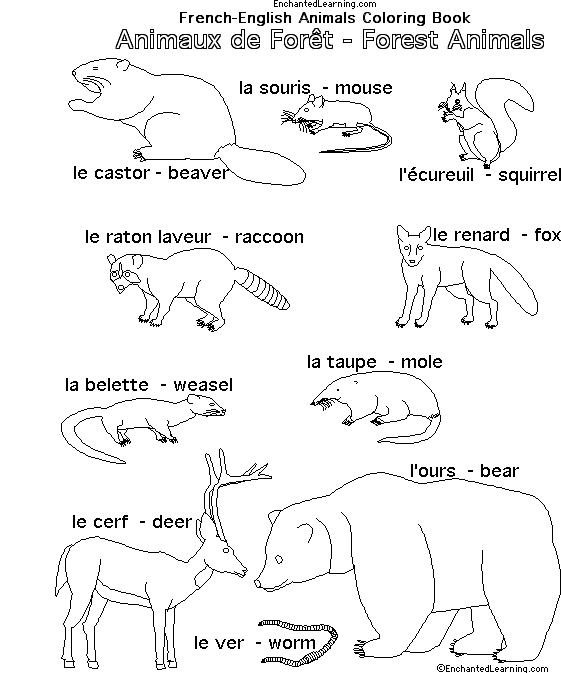 These desert animals get all the moisture they need from the food in their diets.
These desert animals get all the moisture they need from the food in their diets.  Their powerful jaws are so strong that they can carry a dead animal that weighs three times their own weight up into the branches of a tree. Once in the tree, the dead prey is safe from animals like hyenas and lions that might steal their food.
Their powerful jaws are so strong that they can carry a dead animal that weighs three times their own weight up into the branches of a tree. Once in the tree, the dead prey is safe from animals like hyenas and lions that might steal their food. The four photos at right show the same flounder changing its coloration as it moves to different backgrounds.
The four photos at right show the same flounder changing its coloration as it moves to different backgrounds. 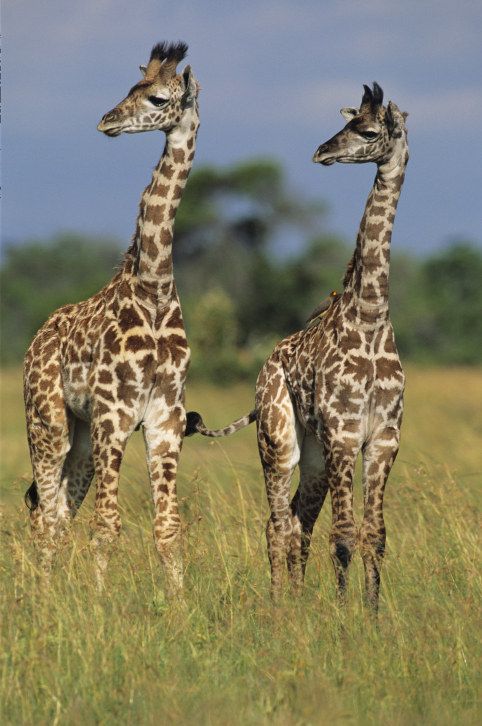
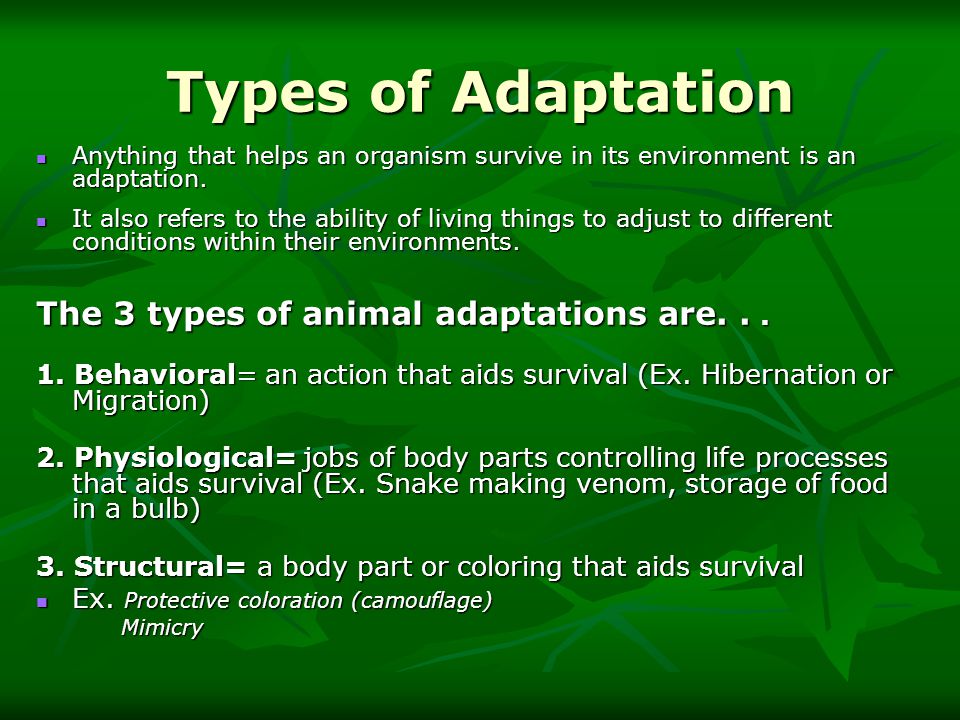 Owls live all over the world in many different climates.
Owls live all over the world in many different climates. Each animal has something that the other needs, and they help each other survive. It’s good teamwork!
Each animal has something that the other needs, and they help each other survive. It’s good teamwork!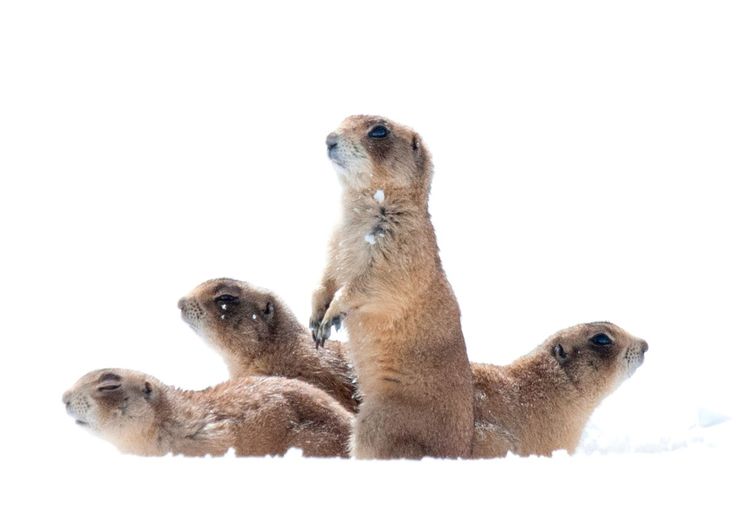


 Because giraffes are so tall, they can also see for a long way around them, which is helpful in the grassland where there aren’t many places to hide from predators.
Because giraffes are so tall, they can also see for a long way around them, which is helpful in the grassland where there aren’t many places to hide from predators. Lions mostly sleep in the day to stay cool, and they hunt at night. When they do catch prey, they use their long claws as weapons and then eat their fresh meal by licking off skin and meat with their rough tongue.
Lions mostly sleep in the day to stay cool, and they hunt at night. When they do catch prey, they use their long claws as weapons and then eat their fresh meal by licking off skin and meat with their rough tongue. Clownfish can also smell the anemone, so they know immediately when one is nearby even if they can’t see it.
Clownfish can also smell the anemone, so they know immediately when one is nearby even if they can’t see it. Even though they’re big animals, polar bears are good swimmers which means it’s easier for them to catch fish to eat.
Even though they’re big animals, polar bears are good swimmers which means it’s easier for them to catch fish to eat.
 They need to communicate with other howler monkeys because they all live in large communities – howler monkeys don’t move around very quickly, so they need friends to help protect each other from predators. Howler monkeys also wrap their tails around tree branches to keep from falling down.
They need to communicate with other howler monkeys because they all live in large communities – howler monkeys don’t move around very quickly, so they need friends to help protect each other from predators. Howler monkeys also wrap their tails around tree branches to keep from falling down.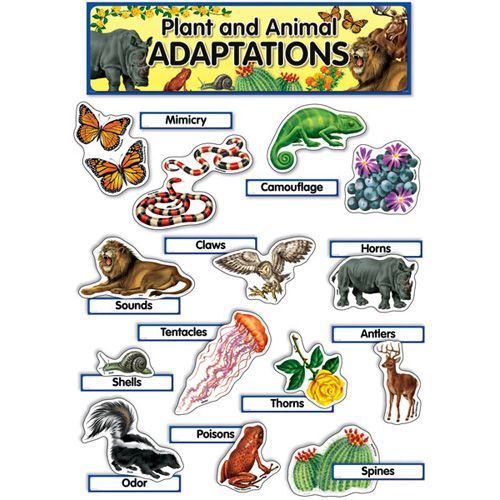
 04.2015
04.2015
 04.2015
04.2015
 04.2015
04.2015
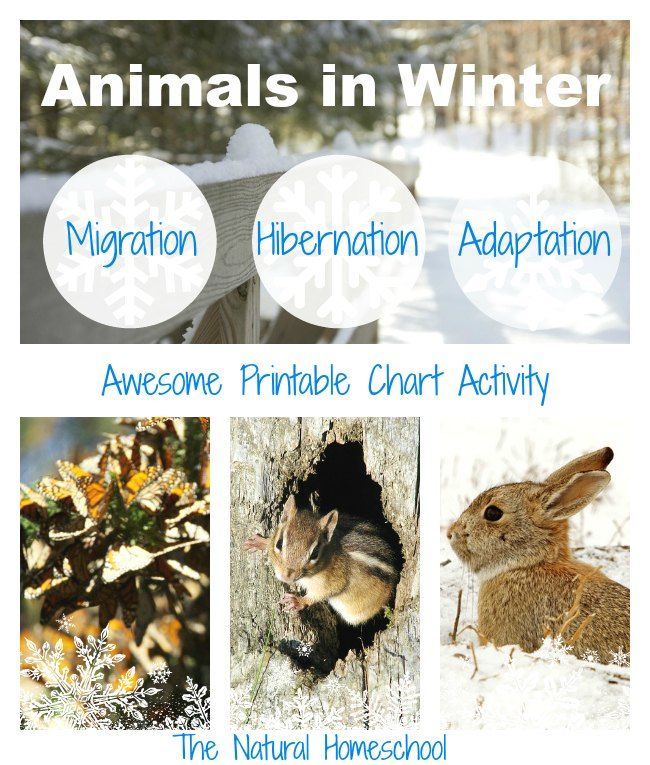 04.2015
04.2015
 04.2015
04.2015
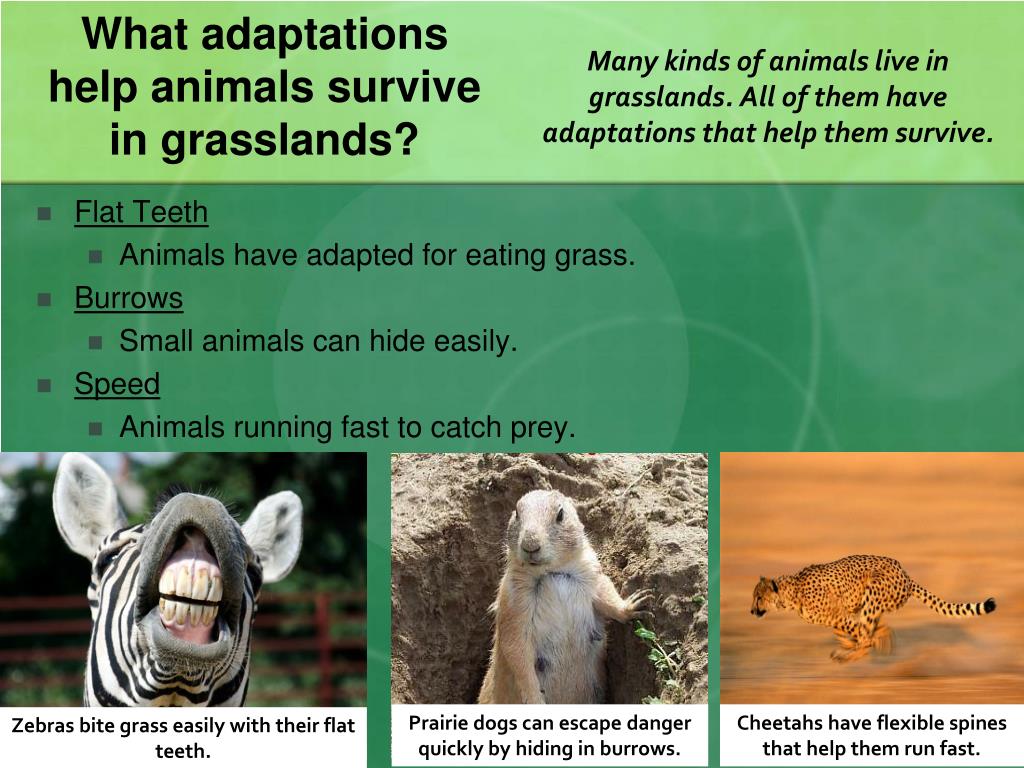 biochemical features of animal adaptation to high and low environmental temperatures
biochemical features of animal adaptation to high and low environmental temperatures  American scientists studied their features of life and came to the conclusion that new communities feel quite comfortable on massive «marine dumps». An article about this was published in Nature Communications.
American scientists studied their features of life and came to the conclusion that new communities feel quite comfortable on massive «marine dumps». An article about this was published in Nature Communications.
 Last year, the low-carbon sailboat team collected a record 103 tons of plastic and other debris. Some of the samples were sent to the SERC laboratory.
Last year, the low-carbon sailboat team collected a record 103 tons of plastic and other debris. Some of the samples were sent to the SERC laboratory.

 When you get to know each other better, you will discover the many joys that she can bring to you — and vice versa. How and how long do animals get used to a new home and new owners? Here’s what to do to make your cat feel comfortable in a new family as soon as possible:
When you get to know each other better, you will discover the many joys that she can bring to you — and vice versa. How and how long do animals get used to a new home and new owners? Here’s what to do to make your cat feel comfortable in a new family as soon as possible:  Tapes, floss, pins, needles, rubber bands, paper clips, and plastic bags should also be avoided, as the Humane Society of the United States warns. A flashlight or a pet laser pointer will also be a lot of fun for both of you when you move the beam around the room and the cat tries to catch it.
Tapes, floss, pins, needles, rubber bands, paper clips, and plastic bags should also be avoided, as the Humane Society of the United States warns. A flashlight or a pet laser pointer will also be a lot of fun for both of you when you move the beam around the room and the cat tries to catch it. 
 Allowing her to be in such a safe place for a while is just as important. She will come out when she is ready to inspect her new place of residence.
Allowing her to be in such a safe place for a while is just as important. She will come out when she is ready to inspect her new place of residence. 